Books in print
HELLGATE series
NARC series
Vampyre series
Science Fiction
Fantasy
Historicals
Sea stories
Shorter works
Freebies
Shop
Gallery
What's new?
What's due?
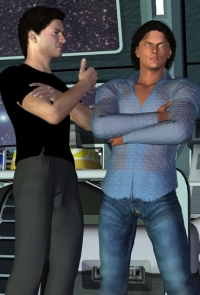
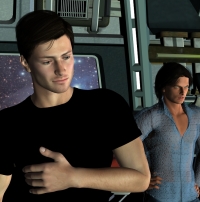
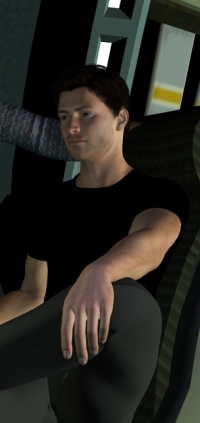
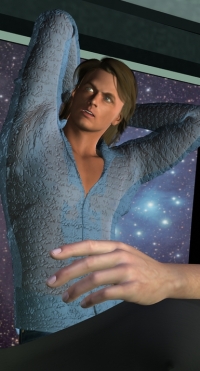
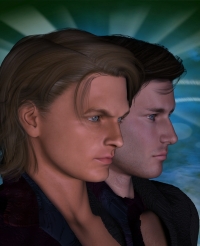
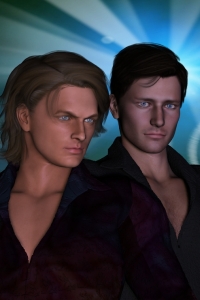
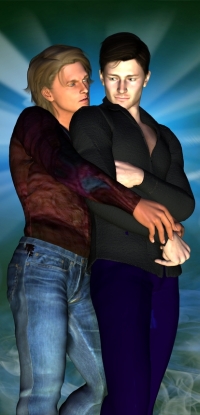
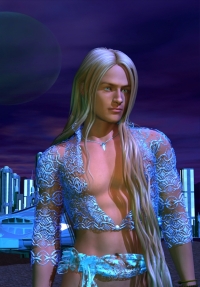
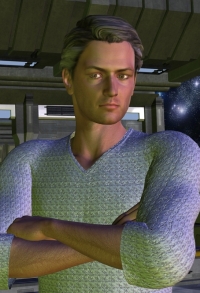
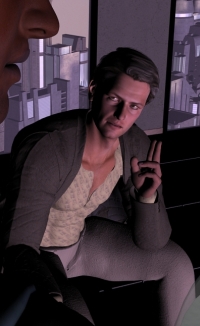
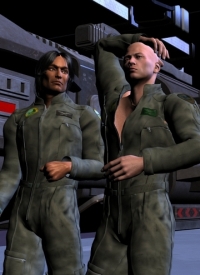
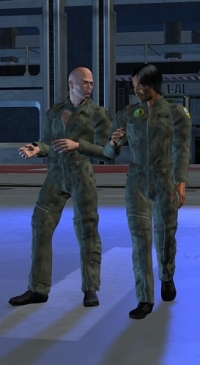
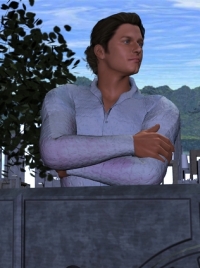
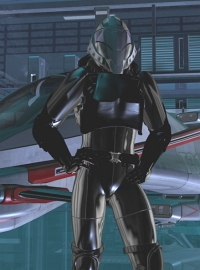
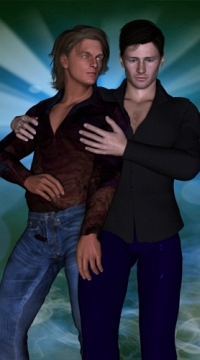
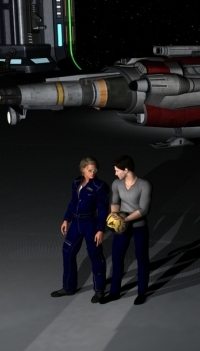
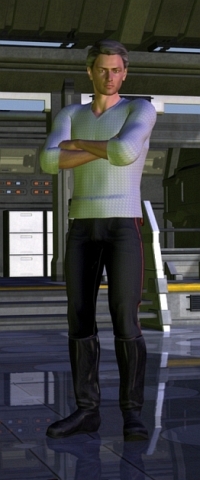
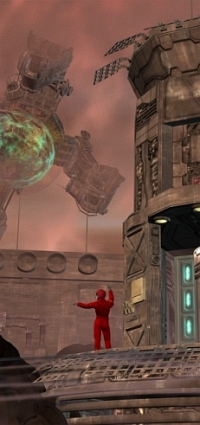
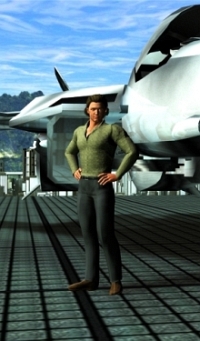
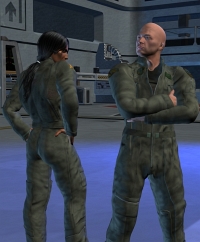
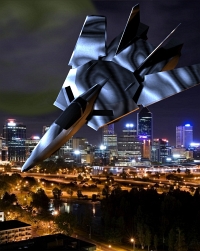
Caveat
All titLes on this website feature GLBT characters and situations.
If you will be offended, please read no further. By further
exploring this site, you agree that you are of age in your
part of the world, and are fully aware of the content of books
and art displayed here.
All images on this site are copyright.
Site contents © DreamCraft, 2018
|

|
As frequent visitors know, a NARC site is under construction at this time, but it's a long and complex job, and we don't
want to hold up the rest of this website, waiting for a comparatively small part of it. So here's the bulk of the
content you'll be seeing on the NARC site, compressed into a single page, and this will hold us for a while!
|
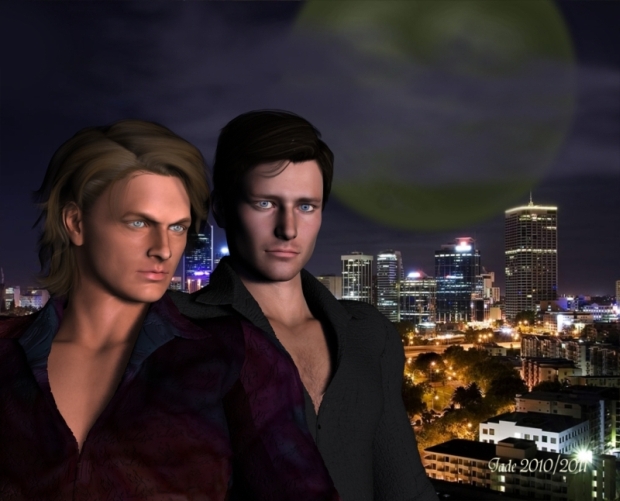

 All sample readings save for THE ENDGAME OMNIBUS
are in a PDF format which
suits desktops, laptops and palmtops, both Windows PC and Mac, plus ILiad, Palm, Pocket PC and so on. For the ENDGAME three-in-one, we can oly give you sample
readings from BOOK ONE: SCIMITAR ... anything else will either not make sense, or just hit you with plot spoilers, since SCIMITAR - BASILISK - ENDGAME is one
story, not three. You'll find the ENDGAME sample chapter simply pasted to its page here on-site; the rest of these samples ... if you need to
download Adobe Acrobat, get it now and install it, before trying to
open the documents. Click on the icon above to visit Adobe.com.
(From our eBooks store, you can also download Microsoft Reader books, suited to the Pocket PC.) All sample readings save for THE ENDGAME OMNIBUS
are in a PDF format which
suits desktops, laptops and palmtops, both Windows PC and Mac, plus ILiad, Palm, Pocket PC and so on. For the ENDGAME three-in-one, we can oly give you sample
readings from BOOK ONE: SCIMITAR ... anything else will either not make sense, or just hit you with plot spoilers, since SCIMITAR - BASILISK - ENDGAME is one
story, not three. You'll find the ENDGAME sample chapter simply pasted to its page here on-site; the rest of these samples ... if you need to
download Adobe Acrobat, get it now and install it, before trying to
open the documents. Click on the icon above to visit Adobe.com.
(From our eBooks store, you can also download Microsoft Reader books, suited to the Pocket PC.)
 READER ALERT / CAVEAT: the sample readings offered here encompass about the first 10% of
these works, and they're uncensored, unabridged. If you're disturbed by candid descriptions of
same-gender romance, or by realistic violence, please don't download! These readings are not intended
for younger readers. By clicking to open the documents, you agree that you are of age in your local
jurisdiction; you know what you are about to read; and the material won't disturb ... 'nuff said. READER ALERT / CAVEAT: the sample readings offered here encompass about the first 10% of
these works, and they're uncensored, unabridged. If you're disturbed by candid descriptions of
same-gender romance, or by realistic violence, please don't download! These readings are not intended
for younger readers. By clicking to open the documents, you agree that you are of age in your local
jurisdiction; you know what you are about to read; and the material won't disturb ... 'nuff said.
 NARC #1: DEATH'S HEAD UNABRIDGED NARC #1: DEATH'S HEAD UNABRIDGED
 NARC #2: EQUINOX NARC #2: EQUINOX
 NARC #3: SCORPIO NARC #3: SCORPIO
 NARC #3.5: STOPOVER NARC #3.5: STOPOVER
 NARC #4: APHELION NARC #4: APHELION
 NARC #5-6-7: ENDGAME OMNIBUS NARC #5-6-7: ENDGAME OMNIBUS
  
  

Since the 1970s, science fiction has been no stranger to gay action.
There are numerous SF stories with gay characters (and this is much more
true in books than in the Hollywood product. Mel
Keegan talks about the gay SF genre right here). But the curious reader is soon asking a
tricky question...
What's true gay science fiction ... and what is an SF novel with an occasional gay reference? Does a
gay-friendly reference here and there make a novel into a gay book? MK has been asking this same
question for some time; and the answer is so convoluted, each reader has to decide from him-
or herself. For example, how much would it astonish you to learn that Moby Dick has been listed in the 'best
gay novels of all time' category? We were surprised. We've read it! What did we miss?
Which is a good way of saying, if the gay 'subtext' is so subtle that even we didn't see it till it was
pointed out to us ... are you absolutely positive it was a gay novel (film, show, whatever), or could you
be reading into it something that isn't actually there? Carl Sagan coined the phrase, 'Where there are strong
emotions, we are liable to fool ourselves.'
There is, however, no such doubt when Mel Keegan's imagination turns to the science fiction genre. There is
nothing subtle about these novels. The up-front, 'in your face' treatment of gay heroes, lifestyles,
themes, issues, is like the proverbial breath of fresh air.
The NARC series is not written for younger readers; and it's probably true that the mainstream SF
readership probably still isn't quite ready for these novels either. The books are just a tad bit too forthright ...
no 'pussy-footing' around any bush, no messing about with 'subtext' material which leaves you wondering
if you actually saw what you think you just saw, or if it was all in your imagination!
(Mainstream SF readers are
quite ready to accept gay characters; but what about the gay equivalent of the straight romance novel's love scenes?
If you've taken a quick look at what's going on between the covers of the bodice-rippers these days, they're steamier
than a lot of 'adult' novels were just a few decades ago;
and SF has always had an erotic vein. Now, what happens when you replace straight steam with bent steam? This is an
excellent question, and don't miss MK's discussion on the topic!)
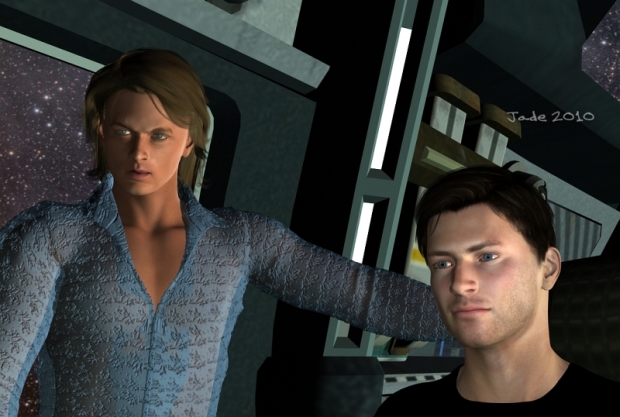
If a novel is going to explore gay SF honestly, it needs to deliver on its promises, actually BE a gay novel rather
than a straight novel with a gay character who appears now and then — on other words, the 'token gay.'
(In American
TV,some time ago, a series would have a 'token black,' a character who was somewhat gratuitously created as an
African-American, so the series could legally claim to have to racial bias. Gay chatracters in the Hollywood product
are still struggling to achieve that dubious status, but we can live in hopes. Plus, a decade or so after the 'token
character' makes an appearance, mainstream shows start to get genuine characters, with genuine stories written for
them. And that's something to hold on for.)
In an unpredictable genre which often fails to deliver the goods, the NARC series over-delivers. Mel Keegan seemed to set
up the scenario and characters on the first novel, and then let them off the leash, let them run. Readers are
carried along with them at break-neck velocity, and when the action becomes intimate, your reading glasses will
certainly steam up.
It's a twenty-fourth century that would conceivably give conservative old Gene Roddenberry a complex. This future is an era
when men could be real women if they wanted to, and women could be real men, and no one would even notice
what was going on, becuse gender liberation has happened, past tense, and there are bigger issues to worry
about. Gay science fiction, more than any other genre, has the potential to examine alternative futures which
might easily become real. Mel Keegan's work has a strangely oracular 'feel' about it.
Kevin Jarrat and Jerry Stone are very much products of their own century. Jarrat can swing both ways, but
when he falls in love, his preference is Stoney. Meanwhile, Stone is less 'omnisexual' (it's that a lovely
term? It was coined only recently, for Captain Jack), and luckily for readers, his fantasies run along the
lines of Jarrat. The two are drawn together by an irresistible magnetism, but circumstances beyond your
imagination conspire to keep them apart for just long enough that the reader is ready to throw the first
book down and stamp on it when ... all is resolved, and revealed.
The series has run to five titles. The first, Death's Head, written around fifteen years ago, is the
best-known to most readers, and the latest, Aphelion, is said to be the author's own favorite. Most readers
couldn't choose a favorite if they were under the gun, but Aphelion beings the super-carrier
NARC-Athena back to the solar system, Earth and Mars, and it is certainly the jewel of the series. This
reviewer loves them all equally, and is hoping to see a sixth volume eventually!
— Buckeroo Bonsai, 2008
|

Backstory biographical information compiled from the all five books
by ARICIA GAVRIEL. Note: some comments below are cross-referenced with
HELLGATE, which takes place in the same universe, two centuries after the
NARC stories. Excerpted from Aricia's webpage and used under association.
NOTE: this fact-file has been updated to include
information revealed in SCORPIO and STOPOVER. Be aware of plotspoilers!
Kevin Jarrat and Jerry Stone are around thirty years old and are of
un-genetically engineered human stock, though only Stoney was born on Earth.
Jarrat began life on a 'halfway world' called Sheckley, and does not even
know who his family is. He was only three or four years old when a man who
was probably his father left him behind on Sheckley ... luckily for the child,
because the man who seemingly abandoned him, one Keith Jarrat, was killed
along with all other colonists
on the Lombard Explorer, which was outbound to start a new colony.
If the child had been aboard
when the ship left Sheckley station, Kevin Jarrat would have been dead at age four.
In fact, he was raised in a hospice for foundlings and orphans, and as soon as
he was old enough joined the Army as a means of escape from a 'nothing' world.
Sheckley was built as a refueling station for the huge colony sleeper ships that
were heading out to build new worlds in the days before the powerful, fast
drive engines that are more common in Jarrat's and Stone's era.
People who know Sheckley call it a 'gas can with
lights.' It is not a planet, but a hollowed-out planetoid, and it looks a lot like
a cross between an oilrig and a launch gantry! It is very far from a place one would want to grow up ... and it was
already full of Angel
when Jarrat was getting into his teens. We visit Sheckley in STOPOVER.
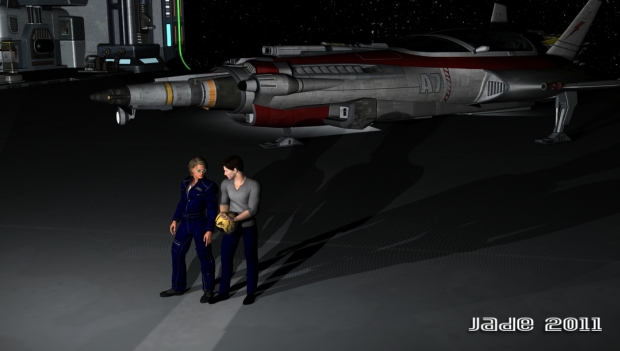 Jarrat says at
one point, he was probably lucky to not become a user. Many of his friends
were not so lucky, and one friend (a teenage lover) died of Angel. Losing this
friend was Jarrat's inspiration to enter NARC and play his part in the drug war.
Jarrat says at
one point, he was probably lucky to not become a user. Many of his friends
were not so lucky, and one friend (a teenage lover) died of Angel. Losing this
friend was Jarrat's inspiration to enter NARC and play his part in the drug war.
But first, to escape from Sheckley, Jarrat enlisted in the Army at age 17. The arrival of a ServIce
recruitment ship was timely, and Jarrat never looked back. He made
good in the Service, though his Army career was a little patchwork. At least
one promotion came as the result of a personal relationship with a senior
officer (!) — but Jarrat 'paid' for that promotion time and again in the field,
when only his own wits, courage and his ability to 'think outside the square'
won the day. (A story told by Jarrat to Stoney, in Death's Head.)
His unorthodox 'result getting' capabilities soon came to
the attention of NARC, and when his Army hitch was up, Jarrat applied to NARC and switched
Services.
He took with him into NARC all his Army skills, probably
most notable among which is his ability as a combat pilot — though all
NARC officers as flight trained as a matter of course.
Kevin Jarrat is described as
tallish, though not especially tall (one guesses, about five-eleven to six-one), and his hair
is light brown and sun-blond. He works hard, trains hard, and also plays hard.
He was able to undertake the undercover assignment into the Death's Head
Angel Cartel ... he was able to survive (albeit with a lot of help!) the
ordeal of being beaten almost to death, and come back fighting, though he did suffer
some post-traumatic stress.
Part of the key to his survivability is the hot
temper for which Kevin Jarrat is well known. But he is also physically very tough,
as you would expect of any kid who grew up on Sheckley.
By contrast, Robert Jeremy Stone ... 'Jerry' to his family (which he hates), Stoney to
his friends (which he prefers) is a lot more mellow and laid-back, though he gives
the impression of just being a slower-burning fuse that might even lead to
a bigger charge of explosives in the end! (Officially, the Service knows him as
R.J. Stone. The computers know Jarrat as Kevin J., but the 'J' doesn't stand for
anything. The machines simply stumble if there's no middle initial! Harry
learns this from Jarrat when he's completing the treatment papers for Stoney
in the unabridged version of DEATH'S HEAD.)
Stone was born in London on Earth, but he spent a lot of his youth on the east coast
of Spain, where his family own a massive house in the hills above Barcelona. His
passion was for flying, and when he was a kid he flew ultralite planes over the
Spanish hills.
The Stone family has money. They were once obscenely rich. One of Stoney's ancestors
was a bulding contractor who figured out how to 'winterize' existing houses in
the Mediterranean region, fitting insulation, triple-glazing and solar powered
heating, to couteract the effects of the 'sudden climate change' (who hasn't
seen The Day After Tomorrow?! The scenario won't be as bad as that, but we
know the Atlantic Ocean heat conveyer will stop, and when it does, Europe will be
getting very cold.)
The Stone family fortune was built on quick-fix winterizing,
and they banked about two billion dollars! Most of it was lost by the next
generations, but when Stoney was in his teens the family was still very rich ...
and they had young Jeremy's whole career planned out for him. He was going to be
a leading scientist and then flow on into politics...
In fact, when he left college (Floyd Webber Polytechnic in Paris),
Stoney enlisted in 'Tac.' (Tactical Response has replaced
the police forces on Earth and across the colonies. Tac is something like a
little brother of NARC; it's paramilitary, same as NARC, but definitely a few
rungs higher up than any police force known on Earth today.)
The story of Stoney's enlistment in Tac is a whole tale in itself. During
his college years he lost some friends to Angel and was motivated to go get revenge
for them, by joining Tac ... this did NOT please his family! When he joined Tac,
their plans were derailed.
But Stoney went ahead with his choice, though the cost of
this was high. When the books begin, he has been estranged from his family,
and also, though they
have money, he doesn't benefit from this. Everything he has at the time of
these stories, he has earned by himself.
The hunger for revenge has worn away with the
12 years of service in Tac and NARC, and now, like Jarrat, he's a thorough
professional in a tough trade.
He went through
the full Tac training and apparently did well. One of his instructors while
still on Earth was Victor Healey Duggan, who would become Tac Colonel Vic
Duggan, in command of Tactical in the city of Elysium, the Zeus colony. Duggan
was always very impressed with the young Stone, and expected him to go far. He
kept tabs on him, when Stone transferred from Tac to NARC, and it was not long
before Jerry Stone was promoted to Captain.
Stoney has considerable piloting skills
which go back to his teens, when he used to fly sail planes (gliders).
He is described as tall and broad, built like an athlete (one imagines,
six-three or four); his hair is dark, or almost black, and his eyes are
an amazing shade of blue. His temper is not as quick as Jarrat's, which may
only mean he reaches flashpoint slower!
He is equally as tough as Jarrat. While
Jarrat was 'beaten to death' in a backstreet in the city of Chell in the
first book, it was Stoney who had to survive a forced-addiction to the deadly
designer drug, Angel...
So, let's take a moment here to ask -- just what is Angel?
What is Angel? It's a radical hallucinogen that produces the most incredible flights of fantasy you can imagine, and a lot you can't! Anything the user's mind can dream up comes to life, and while he or she is on the trip, it's beyond anything you could describe.
There are two downsides. The fantasmagorical sensual fantasies of the actual trip turn into your worst nightmares after you come down; and they don't go away. Your brain wiring has already been altered. The nightmares get worse until eventually you take another dose of Angel just to stay sane ... and the treadmill starts again.
The second downside is, prolonged usage causes organ damage; and it's instantaneous addiction, so there's always going to be prolonged usage. Once you start, you just can't stop ... like the game you can't stop playing even if it kills you.
Even so, many people choose to take Angel in a fit of depression. Others are forcibly addicted (like Stoney), and some are accidentally addicted. Angel makes a great weapon. It also makes a really stupid prank — the kind of prank college kids pull all too often.
By one means and another, a population gets full of Angel. It's not easy to make, so it has to be either smuggled into a colony system, or it can be made there, from smuggled materials. It can be made only in laboratory conditions; and when it hits the street it's worth billions. Vast fortunes are made. It's been said Angel has built empires and torn them down.
And in tandem, these two -- Jarrat and Stone -- share command of the carrier Athena.
So, who's in command, you ask?! The answer is -- both!
It might be
thought a little odd at first, that the carrier should have two captains ...
but after a very little thought it starts to make tremendous sense. Only the captain has
the rank to make life-and-death decisions that might affect a whole colony
or a trillion-dollar spacecraft, and those decisions might have to be made
on-the-fly, in the field or on the ship, at a moment's notice. The work these
NARC agents perform is incredibly hazardous. On almost all 'away missions,'
there are times when they almost don't come back alive; they can be out of
touch with the carrier and still have to make pivotal decisions involving
the future, and survival, of vast numbers of people and massive amounts of
real estate.
It's often absolutely necessary to have the command rank officer
in the field, buried in a deep-cover situation for weeks at a time ... but it's
also vital to have a command rank officer on the ship. Solution: have a pair
of command rankers (in this scenario, captains) who work as a team.
(The concept is revolutionary and daring, but
it's the logical answer to 'the Star Trek paradox:' in the original series they had
Jim Kirk off the ship every episode, in unbelievable peril, often leaving
command of the ship to junior officers ... in Next Generation, you had the
captain's executive officer always telling Picard he's too valuable, too
vital to the ship, to be allowed out on 'away missions,' yet in a lot of
instances, a command rank officer was actually desperately needed in the field. The
solution has got to be, have TWO command rankers who work in partnership. Two captains.
But since the Trek universe is
soundly based on contemporary military hierarchies (in fact, the Navy), Mel Keegan's elegant
answer to the age-old problem isn't available to the screen-writers. NARC, however,
is NOT the military, and it isn't based in 1960s hierarchical thinking. If you come
forward to Stargate SG1 in 2003-2005, they have a unit comprised of a civilian scientist,
plus two rankless alien mission specialists, and TWO COLONELS. Good golly, has somebody
in Hollywood been reading Mel Keegan ... or do brilliant minds think alike?! I should
think Gene Roddenberry would be spinning in his grave, but the solution is simple,
elegant ... and works. On an OT note, if you're wide awake when you watch Firefly,
you would swear Joss Whedon has read MK! And that's very cool indeed.
Jerry Stone was already aboard the carrier when Jarrat arrived to replace a captain
who had been killed in the field. The Athena's other captain was terribly
injured on the same assignment. Jarrat and Stone were a new partnership, just promoted
and teamed up ...
And it didn't take long
for the sparks to fly between them: it was instantaneous attraction, but
the regulations of the Service forbade personal relationships between the
ranking officers, for good reasons. As it's explained in the books, it would
be perfectly possibly to have a billion-credit operation destroyed because
one officer 'pushed the panic button' to save his comrade who was in jeopardy.
It's important to note, though, that the Service doesn't have any problem
whatsoever with a gay relationship. It's the context of any relationship
that gives them the chill shivers!
NARC regulations aside, Jarrat and Stone were deeply attracted to each other
at the get-go, and it was only a matter of time before something happened which
ignited the explosive relationship between them.
The NARC universe is four centuries in our own future. On the many worlds
which have been colonized by humans, every problem humans ever had seems
to have gone out into space with us! We've taken our pollution, our
overpopulation, our violence and partisan tendencies ... and our thirst for
the extraordinary, even if it carries with it a certain danger.
Such as
the suite of designer drugs available in the Twenty Fourth Century. Most of
the drugs are made virtually harmless by the blocker shots, the 'come down'
drugs which act like an instant-sobriety shot. In EQUINOX we see a young
man who's taken something to help him get over the shock of a car blowing
up on his driveway, killing his lover and almost killing him. The young man
is able to come down quickly and easily using the blocker shot given to him
by a Tactical officer who is his friend.
Therefore, most recreational drugs are street-legal
in this century, even though some of them are well-known for rotting your
brain. They're no worse than cigarettes in our century.
The one that is different is Angel ... it's highly
addictive, there's no blocker for it ... in fact, it's utterly lethal.
You use it once, and you're on a death sentence.
One way or another the Angel gets into a system, when the per capita usage of
the drug is reported to have reached the 10% line, NARC involvement is
automatic. A carrier is assigned to that colony, and a planet-sized
investigation starts.
The investigation can end in all-out war, and
while on the one hand NARC seems to be armed to the teeth like the Army,
the Air Force, the SGC and Starfleet all rolled into one, on the other hand the
Angel Syndicates are so well armed, at the end of EQUINOX, SCORPIO and APHELION
it's touch-and-go whether NARC will be 'totally blown away.'
So what's NARC? It's an acronym that stands for Narcotics And Riot
Control. They're paramilitary ... they run the biggest carriers in
space, loaded with gunships and fighter planes, squads of really BIG
dudes, the 'riot troops' who jump out of the gunships right into the
middle of a streetwar where the bad guys are shooting the kind of ammo
that knocks down buildings.
The carrier has a Starfleet crew that looks
after running the ship ... the chief carrier pilot is Colonel Helen Archer, who
lost her son to Angel ... but everything else in the operation is down to
NARC.
Decisions are made on the fly, and the captains in the field are
answerable to a command hierarchy that's strung out through the colonies
all the way to Earth. But it takes so long to get a message out
and back, most of the time, a NARC captain has to take the initiative
himself, runs the risks, make the hard decisions, and put his neck on
the block, to get something done fast. And if they moved any slower
(ie., waited for orders from back at base!) the Angel syndicates would
slip through their fingers like warm oil
This is where Jarrat and Stone come in. Hardware and software aside,
NARC is about people. And Jarrat and Stone were provided with one of the
best crews in the Service to back them up, including the Canadian engineer,
Karl 'Bud' Budweisser, and the Chief Medical Officer, 'Kip' Reardon. (I asked
Mel in a recent email, what 'Kip' is short for: It's Kipling. There was a
scene in the original version of DEATH'S HEAD ... pre the butcher-job
that got DH down to a length GMP could deal with ... where Reardon was
backstoried, and you got to know some about his family, and where
the name comes from).
The crew of the Athena also includes the
glamor-boy pilot, Curt Gable and the carrier's XO, the Russian, Petrov.
But my personal favorites from the 'supporting cast' are Gil Cronin
and Joe Ramos, the two giant Marines-type troopers from the Raven units.
However, top-notch crew or not, Jarrat and Stone were going to get into
big trouble sooner or later and one way or another. They take it in turns
to do the deep-cover assignments ... off the ship, spending weeks in
the field where their only contact with the ship is a secret transmitter
or a public vidphone!
And it's dangerous. Extremely. So there was
no surprise when the whole thing went bad one day. This is close to the
start of DEATH'S HEAD. In fact, a lot of the first book is based on the opening
segment when Jarrat is literally beaten to death
in a backstreet in a super-city called Chell. Then he vanishes off the
face of the planet, and Stoney (who's been hiding a burning passion for
Jarrat for a long time) hunts him down across half the world, while in
the background an Angel-war is breaking out in Chell and other places.
The tracking-down of Jarrat is a great story in itself, but about the
time Jarrat gets himself back onto an even keel and, like E.T.,
finally calls home ... the Angel-war has exploded and it's Stoney who
is in the *&@! up to his eyeballs.
In fact, Stone gets forciby addicted
to the super-drug, leaving Jarrat with a puzzle he can't solve by any
legitimate means. Very soon, Jarrat is in the street, breaking every law you
can imagine, and, as anyone who's read the book will tell you, the only
way he can find to get Stoney's life back is to put his own life — and
his own sanity — on the line.
At that point, we'd already met the miracle-worker, a 'healer' called Harry Del.
Harry is back in all the subsequent books. His story is hugely compelling.
He works with Kip Reardon, but he's almost at war with NARC's Reasearch
& Development division ... and it all comes to flashpoint in APHELION.
In DEATH'S HEAD we saw Del do something
weird and wonderful, with nothing to do with conventional medical
skills and surgery, to save Jarrat's life. But when Jarrat flies Stone
back to Del, to ask Harry to do the magic for him, he soon learns it's
different.
There's a huge personal sacrifice to be made ... and out of
this sacrifice comes the empathy that makes Jarrat and Stone as
extraordinary as they are in EQUINOX and the other novels
They're empaths, not telepaths. There's a difference. Telepaths can
read thoughts. Empaths can 'only' read feelings — and Jarrat and
Stone can read each other so clearly, one knows when the other itches
or sneezes or laughs.
On one side, you can easily surmise what this
bodes for their sex lives! On the other side, NARC's R&D people soon got hold of the
report on their empathy, and immediately
wanted to see if the empathy could be turned into weapon.
This is where the second book opens. At the start of EQUINOX, Stoney
and Jarrat are sweating their way through an exhaustive series of
tests being run by NARC, to see exactly what the can do. Throughout the
series, Harry Del is fighting off R&D, while Jarrat and Stone endure a test
program that comes to its own flashpoint in APHELION.
The empathy gets them into a lot of trouble ... it also saves their
lives ... and it makes possible jobs that would otherwise be totally
impossible. Without the empathy, Jarrat and Stone are already crack
agents, but with the empathy, they have abilities that blow the doors
off their rivals.
— Aricia Gavriel
|

Q: Where did the characters of Jarrat and Stone come from?
A: Out of the depths of my imagination. As I think I've said
somewhere else on-site here, part of my job is incredibly tedious
and the only way to stay sane is to let the mind wander. Most of
my story ideas arrive that way: while I'm literally staring at a
featureless wall for an hour.
Q: How long does it take to write one of these books?
A: That depends on so many things! 'Real Life' can intrude to the
point where, for weeks on end, you can be fighting to get the free
time to write, and then you can be so exhausted from working that,
when you do sit down to write, you fall asleep instead. At optimum,
it should take about 40 working days to write the book; then I put
it aside for a couple of weeks so I can be objective about it;
stage two is 5 - 10 days of exhaustive editing at every stage up to
and including story editing. Then I hand the book to a couple of
very good copy editors who proofread intensively ... they hand it
back to me a few weeks later ... I go through it again on paper and
tweak anything that still needs tweaking, and we're done.
Expressed in hours, I'd say I put about 200 hours into any book
at the *writing* stage. However, a lot of work goes into the project
before writing begins! Those 200 hours can be spread out over 3 - 6
months, as RL and work permit. Sorry guys: novel writing doesn't pay
enough for a writer to give up the day job until/unless you get into
the best-seller bracket ... and that'd take some special magic!
Q: Is it all science-fantasy, or do you get into research?
A: I like to get the science somewhere close to right (ahem!) in a novel
that pivots on technology. Obviously, one makes allowances for the
'F' half of the term 'SF.' Faster-than-light engines, for instance.
There's some very interesting work being done at think-tank level
right now ... it all seems to suggest that Mr. Einstein's work was
brilliant but incomplete! There may yet be an Extra-Special Theory
of Relativity, adding all the sub-paragraphs and exceptions to the
rules which pooh-poohed hyperlight travel for so many decades. The
research may come to nothing; it could also take another three decades
to bear fruit! In the meantime, SF writers mostly ignore the rules
and go ahead with the story. So yes, I do quite a bit of research to
get the science right — also, aeronautics, airplane handling, the
mechanics of flight. Then I turn it all around and use 'repulsion'
to neutralise some or all of whatever gravity field, which gives me
a free-hand to sometimes do the seemingly impossible. It's fiction,
and at times it borders on fantasy.
Q: Someone recently said NARC seems reminiscent of "Starship Troopers."
Was Robert Heinlein's work part of your inspiration?
A: The book or the movie? DEATH'S HEAD was first written in 1985,
a very long time indeed before the movie came out! The novel of
STARSHIP TROOPERS was done decades before, and of course I've read it;
unlike a lot of SF readers today, I actually liked it! But anyone who's
read the book wouldn't ask this question, because in a few chapters
of Heinlein's work it's easy to see, STARSHIP TROOPERS is actually
an investigation, and a brilliant one, of the morals and ethics of
warfare ... and in fact, it's about the Korean War, fairly thinly
veiled as a future war! It's a great book, but it has nothing whatsoever
to do with a paramilitary security force fighting the drug war on the
streets of super-cities. The only point apropos of STARSHIP TROOPERS
where I can see any similarity is in the space armor designed by
Heinlein. In the NARC books I use riot armour. At the time I did DEATH'S
DEAD, first draft, 1985, I wasn't thinking of Heinlein ... I hate to
admit it, but I was thinking more about George Lucas's suits of armor ...
how CLUNKY they are — and how ineffective!! Here's an Imperial
Stormtrooper in shiny-side, squeaky-clean armor, and one shot from
a hand-held weapon knocks him flat. I remember taking the concept of
armour out to what I thought was its logical conclusions. The result
is right there in the NARC books. I added repulsion, let the NARC armor,
which weighs about five hundred kilos, waft upward like a feather. You
can knock down a character in NARC armor, literally sweep him along
the ground with your gunfire, but punching a hole in the armor is next
to impossible. It takes something special to get through it, but it
CAN be done! So, no — Heinlein's book would never have occurred to
me when I was writing DEATH'S HEAD, and of course, my book pre-dates the
movie of STARSHIP TROOPERS by so long, if anyone provided inspiration
for someone else, it could only have happened the other way around!
A point of interest is this: Heinlein's armor, as described in the book
— and it was the one big thing from the novel that everyone, myself
included, was waiting to see in the movie — was deleted from the
film production!! So, to draw a comparison here you have to go back to
the novel of STARSHIP TROOPERS ... and as some (most??) SF fans will
know, Heinlein himself 'borrowed' the concept of space armor which was
self-powered, virtually indestructible and capable of re-entry from
space, from E.E. 'Doc' Smith, who can be said to have pioneered the
idea as long ago as his world-renowned SKYLARK OF SPACE novels, the
first of which was written in or around (gasp) the 1920s! And I can tell you,
positively, absolutely, the SKYLARK novels were the last thing on my
mind when I wrote DEATH'S HEAD!!
Q: Did you have any inspirational sources?
A: Yes, though it's only 'bits and pieces.' As I said, the
armor in the Lucasfilm movies struck me as not working very
well, and the fixing of it created the blueprint for the NARC
riot armor. The inspiration for Tactical comes from real life:
if you take GSG-9 (the German anti-terrorist squad), plus the
SWAT unit of the US police force, plus something of the
electronic backup from Air-Sea Rescue, you get close to
Tactical. I don't cite something like the SAS as being
inspirational for Tac, because it's so rigidly military ...
Tactical in these books, is a provincial militia. They're
civilians who've had the training, been given the weapons and
armor, and are out there doing an impossible job. The SAS is
too military, but some of the cutting-edge police departments
are coming close. But there is nothing like NARC in either
reality or fiction, that I know of. Incidentally, I always see
the NARC shuttles, space-to-surface fighter planes, as USAF
F-14 Tomcats. I learned to love F-14s in that movie where
Kirk Douglas takes an aircfraft carrier through a wormhole
to 1941, just in time for Pearl Harbor. So yes, the inspirations
are many and various: a piece from here, a piece from there.
 Q: Where would you like to take Jarrat and Stone in future?
Q: Where would you like to take Jarrat and Stone in future?
A: Eventually I'd like to have someone somewhere find a cure
for Angel, which means NARC as a department can be halfway stood
down ... you'd never dismantle NARC, because if someone invented
one designer drug like Angel, it can be done again. So you'd keep
NARC active as a unit, though not in the field. Before that
happens, I'd like to take the carrier back to Earth. Why? Because
I'm fascinated to take a look at Earth in their day and age ...
is it busted up, or have we fixed up? I would also like to
backstory the characters a good deal. A LOT of the character
backstory material was sacrificed out of DEATH'S HEAD, when I
had to cut the story to GMP's maximum text-length. It just had
to go. So you were able to get only snippets about who Jarrat and
Stone are, where they're from, and so on. Actually, if there is
enough reader interest in a 'Compleat and Unabridged' special
edition of DEATH'S HEAD, I can put that material right back
where it belongs!
Q: Which of the two books currently out is your favorite?
A: EQUINOX, for a couple of reasons, both of them personal (so
I know a lot of readers will probably disagree). A novel which has
to set up a relationship spends a lot of time doing just that ...
getting the two characters into a plausible and compelling
relationship. Once the relationship is set up, however, you can
launch into a new plotline without having to put in the ground-work
all over again. Now, there's two opinions here, 180 degrees apart,
and each is as valid as the other! I don't know how the gay-books
demograph divides up, but the readers in one camp enjoy the set-up
of a new relationship more, and the readers in the other camp
enjoy the off-and-flying relationship where the novel launches
right into the new story, as from Chapter One. I pitched my tent
in Camp Two,so I prefer EQUINOX, but no one should read this remark
as a criticism against 'first time stories.' I've written a couple
of DOZEN 'first timers,' and lots of readers (maybe even most
readers!) have a preference for the 'first time' story.
Q: How's SCORPIO coming along?
A: Slowly but surely. I'm working on three novels at the same time,
as of this writing (August '03). HELLGATE: PROBE is virtually
finished and into 'the edit from hell' phase. (Which means an
edit so rigorous, the end result is a whole new draft). At the
same time, we have THE LORDS OF HARBINDANE practically in pre-press
as THE DECEIVERS is going through bookbinding ... and SCORPIO
is being worked on in whatever spare time I can get. DreamCraft
have yet to set a date on publication; a lot depends on me! If
I can get it done in time, I'd like to see it out in April '04.
Some guardian angel will have to get the RLGs (real life gremlins) off
my case before I can work any faster than this! [ This interview
was obvously recorded when MK was working on SCORPIO! The book shipped
a long time ago ... the current tite is APHELION. -ED.]
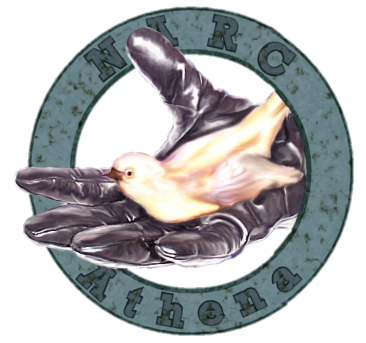
|

Four centuries from now, humans have colonized scores of worlds, and are
still in the process of
terraforming and populating them with the untold, unwanted millions
of Earth's people. These colony worlds opened up new vistas of opportunity
... for the criminal cartels as well as the law-abiding.
It is an age of technlogy on a grand scale. Ships the size of cities, artificial
intelligences — and designer drugs which have never been imagined
in mankind's long history of experiment with rare, precious substances.
All the "traditional" drugs of the last several centuries have been
rendered harmless and therefore legal. The "blockers" are as cheap as
the drugs, and are sold legally, often in the same pack.
There are other substances which are far from recommended, chemicals liks
'gryphon' and 'chimera' and 'Buran.' These are certainly brain-rotters,
but even they have their blockers and are legal in some colonies, where
the population is judged affluent enough to afford both the Buran and the
blocker. In poorer colonies, Buran is rightly banned.
But in every colony, one drug remains utterly illegal.
This chemical is different. There is no blocker, no "cure" ... and the
first dose is lethally addictive. One rash act, one inebriated mistake
— or an act of spite on the part of a rival — and the user is
on a one way trip.
The drug is known as Angel.
It's a bitter, golden powder that has built
empires and torn them down, across the exotic colony worlds of the
Twenty Fourth Century. The "Angel empires" are the drug syndicates ...
Equinox, Black Unicorn, Death's Head, Scorpio, Aphelion.
In the more distant colonies, weeks' flight time away from the homeworlds,
their rule exceeds the power of government. And the siren-song
of Angel, the most seductive "exotic" ever designed, lures ever more
humans, endangering whole generations.
It is fifty years since Angel first appeared from a lab somewhere in the
Cygnus colonies. The rot began sowly.
Fifteen years later, its threat
was monstrous enough for the governments of Earth and the colonial worlds
to meet at the conference table in an effort to develop measures to stem
the tide.
A proposal was made and implemented, and a new department was born ...
a paramilitary department, quite separate from Starfleet, Army and Tactical.
NARCOTICS AND RIOT CONTROL (NARC) was designed,
chartered, and equipped, to take the new drug-war to the front lines. Their
battlefield is deep space, raw new colonies and rancid old ones, where high
technology has placed the Angel empires outside the law and beyond the
reach of Tactical Response (which shortens to Tactical or Tac).
In DEATH'S HEAD and EQUINOX, we learn how Tactical operates, when NARC
works alongside them in the cities of Chell and Elysium.
In the third book, SCORPIO,
we learn more about the early days of NARC, how the department was set
up, who was involved, and their first 'pivotal' syndicate bust, which
took place in the Jupiter system, at a time when the government of
Earth did not actually trust NARC to deploy in the homeworlds.
The goverment still does not want NARC carriers in the homeworlds, nor
NARC gunships in the skies of Earth, Mars and the fantastic skycities of
the Jupiter system.
But NARC is there ... because Angel is there. And in Aphelion, the carrier
NARC-Athena returns to the homeworlds for the first time in her
operational career. Captain Kevin Jarrat and Captain Jerry Stone, and their
crew of paramilitary and civilian specialists, have followed a datatrail
that leads from the far-flung colony of Aurora, right back to the cities
of Chryse and Marsport ... Chicago and London.
NARC is based on the biggest carriers in space, built in Kure, Japan,
by Mitsubishi Aerospace. (In Aphelion, you'll visit the dockyards and watch one
of these monstrous ships launched.) Each carrier is a kilometer in length;
they house a squadron of four gunships, and the "descant troops," units of
armored soldiers, whose task is to jump into the urban battlefield and
lock horns with the high-tech of syndicates like Equinox and Death's Head.
The carriers are also the base ships for a small flight of fighter-inerceptor
aircraft, the VM-104 Corsairs, plus a dozen transports, and a motley assortment
of other light craft, including at least one Yamazake Apogee.
But the urban battleground is only one of the fronts on which NARC
fights. Their war is more often about data, jurisdiction, espionage
and "deep cover" work, assignments taking their special agents ... such
as Kevin Jarrat and Jerry Stone ... undercover into the hearts of the
syndicates.
It's dangerous work, which will one day probably claim their lives —
and they know it. In Death's Head the urban battlefield is the smoggy,
dirty slums beside the spaceport.
In Equinox, it was the heart of a vast city
smoldering in the deep emerald shade of the gas giant, Zeus. In Scorpio,
the warzone is an arctic region where humans have built fantasy cities to
escape from both the climate and the old, corrupt city bottom. Taking the
Angel war into these zones stretches NARC to its limits.
And in Aphelion,
the urban battleground is the frighteningly fragile world of a skycity in
the Jupiter system, where human lives are protected from thwe vacuum by a
shell of armorglass, and battle of any kind should be unthinkable ... but the
Angel syndicate that believes it 'owns' the city believes otherwise.
 But where did all this begin --?
A NARC captain, strung out on Angel, with days left to live ...
a NARC captain, buying Angel for him, in citybottom ... and a man called Harry
Del who is much more than a surgeon. He's an empathic 'healer,' almost an
outcast in his own community. But it's Harry who has the key to the Stone's
survival, and he might have stumbled over the secret to the end of the Angel plague. But where did all this begin --?
A NARC captain, strung out on Angel, with days left to live ...
a NARC captain, buying Angel for him, in citybottom ... and a man called Harry
Del who is much more than a surgeon. He's an empathic 'healer,' almost an
outcast in his own community. But it's Harry who has the key to the Stone's
survival, and he might have stumbled over the secret to the end of the Angel plague.
As the first story opens, Death's Head, Kevin Jarrat has been in deep cover for a long time —
much too long, so Stoney believes. He has infiltrated the Death's Head syndicate,
but pushes his luck too far, too ofen. Sur enough, when his cover is broken and the
syndicate discovers he is 'a NARC,' Jarrat is running for his life.
He is badly beaten and left for dead. Meanwhile, Stoney is fighting
his own battles, and he will ultimately lose. Terminally addicted to Angel,
he is traded back to NARC in a terrorist-style prisoner exchange,
with little time left to live.
The price of Stone's life is an empathic bonding between the two men which will test their
feelings for one another as well as their relationship with NARC itself; and the
alchemist of this 'magic' is an empathic healer from the high valleys above the
city of Eldorado.
He is Harry Del, and in the DEATH'S HEAD UNABRIDGED edition (vastly longer than
the version published in 1991 by GMP, and reprinted in 1999 by Millivres)
we learn that he's one of 'the Rethan mutations.'
In fact, he's an 87/T, and
people like Harry are up against a deep-seated prejudice which is all too natural
to humans ... which of us would like a stranger to know exactly what we're
feeling at any moment? Resentment, fear, amusement, desire? These are feelings
humans need to mask. But from a powerful empath, there is no mask.
Two NARC Captains, empathically bonded...? very Two senior officers becoming
lovers, against every ground-rule the department ever set? And the empthy itself,
which NARC's Research and Development division hopes to turn into a field tool,
even a weapon ...? Jarrat and Stone face a new and personal fight. To stay with
NARC, retain their command, and not let R&D turn them into lab rats. R&D is
determined to try; and if they can't have Jarrat and Stone, they'll take Captains
Auel and Cruz, against every protest Harry can make. In fact, they're already
doing it, and Harry Del is so angry —
Plot spoilers are beginning to sprout like mushrooms. It's time to meet
the characters -- stay on this page. the 'big boys' troopers Gil Cronin and 'Indian Joe' Ramos; the carrier's
executive officer, Mischa Petrov, the observer, Gene Cantrell, who's waiting for his
own ship to launch; the 'gamor-boy pilot,' Curt Gable; the Barbadian Colonel Bill Dupre, who stands
betweeen Jarrat and Stone and NARC Central, on Earth ... and a whole lot more!
Meet the characters, and then -- get
your teeth into these novels, start reading. 40% of each book is online, FREE, and these
are not small books. Reams of 'contiguous samples' from the books are yours for the clicking.
The eBooks and paperbacks are waiting for you, when you can't
stop turning pages, and have to have the rest!
|

Command Rank NARC Officers
The most fascinating, unique and challenging aspect of the NARC series is that the carriers run with not one but two
command rank officers, full captains, where neither is subordinate to the other. At first (and especially to readers
who have spent decades looking at TV science fiction, which is, even now, based on the mid-20th century military and
therefore 'yessir, nossir' 'rank happy') the concept can be daunting and difficult to get the head around. But give it a
shot, and when the system drops into place — nothing else will make sense. Bear in mind that the NARC stories take
place four hundred years in the future; change has taken place. NARC is not the military, but a paramilitary, not
based on the hierarchies of any branch of the armed forces. Get away from the army (STARSHIP TROOPERS), the
marines (ALIENS), air force (STARGATE), navy (STAR TREK), and even the police (JUDGE DREDD) and the sheriff's
department (OUTLAND). Physically throw your mind four centuries in the future, allow for radical change, and drop the
hard-line military approach. And to grasp why it's not only beneficial, but critical to have two full command rankers
aboard in these stories, see the Jarrat & Stone File. There it is in a nutshell ... get your head around this, and nothing
less will ever make sense.
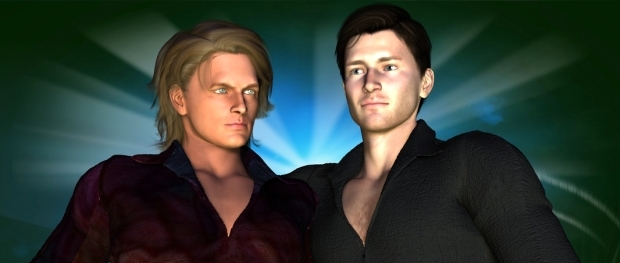 Captain Kevin (J) Jarrat and Captain R.J. 'Stoney' Stone
Captain Kevin (J) Jarrat and Captain R.J. 'Stoney' Stone
Partnered two years before the series begins, Jarrat and Stone are the hub around which the stories revolve. They are 'un-engineered'
homeworlds stock, but Jarrat was born on the halfway station of Sheckley — a foundling, apparently abandoned child who has no
real idea who his parents were. The name of 'Jarrat' is an astute guess; his father could well have been Keith Jarrat ... read the story
of his background in Stopover, plus parts of Death's Head and
Aphelion. Robert Jeremy Stone ('Jerry' to his family; 'Stoney' to his friends) was born in London and
raised in that city and Barcelona, Spain. His family were wealthy, but he found himself cut out of the inheritance when, as a teen,
he refused to have the course of his life dictated. He followed his vocation into Tactical, and then into NARC. Read his story
in Aphelion, where he and Jarrat return to earth ... meet Soney's obnoxious young cousin, Brad,
visit the family's mansion in the hills above Barcelona, and fly an ultralite, in a short break in the action. By contrast to Stone,
Kevin Jarrat is a kid who came up from nowhere. His path out of Halfway and into NARC was the army. At 17 he enlisted when an
army carrier was passing through, and nine years later, when he applied to NARC with a view to transfer, he was accepted. His
military career was brilliant, if patchwork; Jarrat was highly intelligent, superbly fit, innovative, with little regard for authority figures. In short — like Stone — he was just what NARC is looking for. The backstory on Jarrat and Stone is, by now, vast. Rather than repeat it here, link over to the Jarrat and Stone File
and read the whole thing. Come back when you're done, and meet the other characters...
 Captain E. L 'Gene' Cantrell
Captain E. L 'Gene' Cantrell
Eugene Lewis Cantrell was 'in at the birth' of NARC, with a carrier command in the department's first decade. He was responsible for
the original Aphelion bust, destroying the cartel in the Jupiter System, 25 years before the current stories. Aphelion is
back ... and Cantrell has spent six months assigned to the carrier NARC-Athena as an observer, breathing down the
necks of Jarrat and Stone while they prove themselves in action, after the empathic bonding. Cantrell has been waiting for
the launch of the carrier NARC-Huntress, which will be his final field command. He's running up to retirement now, but
there's mileage to be made yet, as he demonstrates when he goes into deep cover in Aphelion.
Cantrell is an old colleague of Billy Dupre, and a strong supporter of Jarrat and Stone, with whom he has worked for some time.
We first meet him at the end of Death's Head, when he comes aboard with Colonel Dupre in
the aftermath of the near-fatal assignment, and the empathic bonding which could easily have spelled the end for Jarrat's
and Stones's careers. Gene Cantrell has been a good friend to them, often acting as mediator between them and the 'brass'
back on Darwin's World, and at Earth Central.
Captain Scott N. Auel
Scott Nathan Auel is a few years older than Jarrat and Stone, and waiting for a command. He was certain the NARC-Huntress
would be his ship, in partnership with Gene Cantrell, and was surprised and disappointed when Mischa Petrov was promoted and
assigned ahead of him. Auel was set aside in favor of Petrov due to his partnership with Captain Janine Cruz. For some months
he has been serving in a support capacity, covering for command rank officers on furlough. For example, in
Death's Head he is coming aboard the NARC-Athena to lead Petrov while Jarrat and Stone
take a welcome, and well-earned furlough. Meet Auel, one-on-one, in Aphelion, at the Mars
facility and at Kure, Japan, at the launch of the NARC-Huntress. (Readers instantly warmed to Scott Auel; someone said
he strikes you as a kind of "younger George Clooney," and we can appreciate that. Auel will be back.)
Captain Janine A. Cruz
An officer with a lot to prove — and the effort costs her career. She allowed herself to be coerced by NARC R&D into being
Angel addicted in the course of an experiment to prove whether the Jarrat and Stone empathic bond can be repeated. Harry Del
continues to refuse to participate in the experiment, though he offers to treat Cruz when her condition is suitable. In the
meantime, her life has become that of an Angel user, and she remains an inmate of the NARC facility outside Chryse, Mars.
Read this story in Aphelion. Cruz has been 'gene tweaked' and genetically modified to make
herself physically astonishing. Her whole 'MO' as a NARC captain (who, at that rank will automatically be doing deep cover work),
is that of the amazon, the siren, the 'shero' who is overwhelming to the competition in every department. She was somewhat
cautiously partnered with Scott Auel because Auel's preference is for men, and since her astonishing 'charms' are wasted on
him, they can develop a sound working relationship.
NARC-Athena Personnel
The crew aboard a carrier are divided into units, and the units mesh into a smoothly-working whole. The day-to-day business
of 'driving the ship,' for instance is performed by a Starfleet crew. Three shifts of carrier pilots and top-line technicians are
'seconded' from Fleet — and they apply for the NARC transfer. Usually, someone like Curt Gable or Helen Archer will
have lost a lover or relative (Archer lost her son, Gable watched his kid sister die), and the Angelwar becomes a personal
vocation. The Fleet carrier crews are not just assigned to NARC, they're champing at the bit to transfer. They leave the
militarized services and slide into a paramilitary where no one says 'sir' (or if you want to, don't say it too often, because
in NARC it's going to sound like you're trying to be funny, or yank someone's chain). NARC people have no time or
patience with rank, which makes powerful sense in a service where everyone is riding a vocation, everyone
is a mission specialist in what he or she does, and a considerable number of these specialists are civilians anyway! Note
especially that in NARC, officers don't wear uniforms. There's a dress uniform for special occasions, when one can 'fly
the company flag' if one desires; but there's no day-to-day officers' uniform. The 'yessir, nossir,' 'rank happy' behavior is
actively discouraged, just as highly-qualified specialists are encouraged to think for themselves, conference with their
peers, hash out solutions to critical problems, and ACT.
The carriers, therefore, are operated by professional Fleet pilots and techs, leaving the NARC business to NARC people.
This is where Jarrat, Stone, Reardon, Gable, Petrov, Budweisser, McKinnen, Del and the others enter the arena. Their province is
NARC: the decisions that make an assignment come together (and also fall apart), the wrangling of intelligence data,
the support for missions in the field, some of which can be months long and tedious, while others are minutes long
and lethal.
And there's another level, or layer, in the NARC service — but it's important to remember that no level is higher
or lower than the others, there's no fixed, rigid hierarchy. Every individual in the department has a critical part to play.
Remove, or denigrate, any one of them, and the whole house of cards comes down. Absolutely pivotal to NARC's
operation is the descant units. They're four units, each 25-man strong, and they're NARC's 'front line troops,' with the
callsigns of Blue, Gold, Green and Red Raven.
These
are the so-called 'riot troops,' who jump from their respective gunships into the teeth of whatever battle. They're front
and center, in the firing line; they're armed and armored. And, armor or no, they're routinely cut down. Most of NARC's
casualties are sustained in the ranks of the descant units on the front lines ... and among captains, whose work takes
them into 'deep cover' assignments where they will be out of communication with the carrier for days, weeks, longer,
and where they can be maimed, killed, in line of duty. If the work were not a vocation, none of these people would
do it. But every individual on the carrier needs to be there.
Surgeon Captain Kipling Francis 'Kip' Reardon
Career flight surgeon with decades of experience on Starfleet and NARC carriers ... rugby and aeroball fan ... family man
with a grown-up family back on Mars. The Reardon clan are from a small agricultural town, Lassiter, but Kip will
likely retire to Darwin's World. His work with NARC has taken him across the colonies and into every kind of challenge,
the most demanding of which was treating an Angel-addicted NARC captain, in Death's Head.
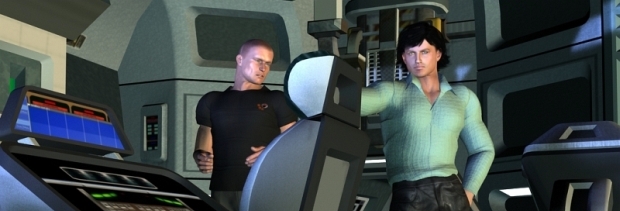 Executive Officer, Ops Room Controller Mikhail 'Mischa' Petrov
Executive Officer, Ops Room Controller Mikhail 'Mischa' Petrov
Directly in line for promotion (and firmly believing it's already long overdue) is the ill-tempered, impatient and somewhat
frustrated Russian, Mischa Petrov. A lot of anger is simmering under Petrov's cap; like all NARC people, he feels the
vocation keenly ... like few other NARCs, he's so eager for promotion, he can taste it. The ambition to succeed is what
drives him, and what makes him short-tempered and often unpleasant to deal with. He can be foul mouthed, and has an
unpredictable streak which makes Jarrat and Stone doubt his ability to command. Aboard the NARC- Athena, he's
the absolute opposite of Curt Gable, and 'the guy you love to hate.'
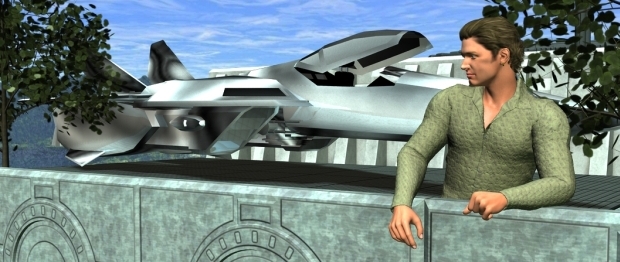 Carrier's Second Officer and Standby Pilot, Lt. Curt Gable
Carrier's Second Officer and Standby Pilot, Lt. Curt Gable
He's young, bright, and keen. Described as the unit's 'glamor boy pilot,' he transferred over from Fleet only shortly
before the story begins in Death's Head. Curt had watched his kid sister die a very
ugly 'Angeldeath,' and the vocation was born in him. A transfer to NARC from Fleet put him in the 'gear train' of
the carrier's command crew. (Notice than although Surgeon Captain Kip Reardon is highly-ranked, he's not part
of the command crew, any more than is Karl Budweisser.) His direct superior is Mischa Petrov, the XO aboard
the NARC- Athena until his promotion at the end of Aphelion, when Gable
is promoted to XO. And if he stays with NARC, in a couple of years of being the understudy to captains like Jarrat and Stone,
Cantrell and Auel, he'll be in line for a promotion himself. It's not actually stated in the books, but the subtle inference is that
Gable comes from a 'good background,' like Stone. His family has money, he had the education to become a fighter pilot and be
on his way up through Fleet.
Carrier Pilot Colonel Helen Archer (seconded to NARC from Starfleet)
Helen Archer has been flying carriers for fifteen years. Her career in Starfleet 'heavies' took her away from her family
in the critical years when her son was a teen, and she blames herself for his descent into Angel abuse. His death sent
her to NARC on the same kind of vocation which took Stone, Gable, and most other 'NARCs' into the service. Read
her story in Equinox.
Carrier Chief Engineer Lieutenant Karl Budweisser
A Canadian, NARC veteran with twenty years, Budweisser is gruff, gritty ... and if he can't fix it, it can't be fixed. He's
a hyperdrive specialist, with a knowledge of NARC carriers more profound than the engineers who designed them. (And
he's described as sounding like he just walked out of The Red Green Show!) Before transferring to NARC
he spent many years aboard army carriers, and he has brought to NARC much of the down to earth, even cynical
approach of the other service. Budweisser's experience is vast, but possibly his most critical facet is that he knows where
that experience ends ... and when to call in a specialist. This is how civilian Yvette McKinnen joined the crew of the
NARC- Athena. This story is pivotal to Equinox.
Civilian Cyber-Sciences Specialist Yvette McKinnen
She's very French, very chic, and very civilian ... and if she didn't work for NARC she would probably be in prison! Her
forte is cyber systems. She knows how they tick, how to build them — also how to deconstruct and hack them.
The extent of her experience becomes clear in Equinox, but in Aphelion we glimpse a little of her background. And it's not all entirely legal. We guess
that she was one of those cyber geniuses who can either be slammed into a cell and the door locked for twenty
years, or recruited. McKinnen was placed in charge of data wrangling on the Jarrat and Stone project (when NARC
Research and development set out to 'destruction test' them). It's the last place McKinnen wants to be, though she
comes to see the sense of the project. Her own surveillance project was firmly founded in artificial intelligence and
biocyber systems; it was put on indefinite hiatus when the Jarrat and Stone empathy came along, and McKinnen is
understandably resentful.
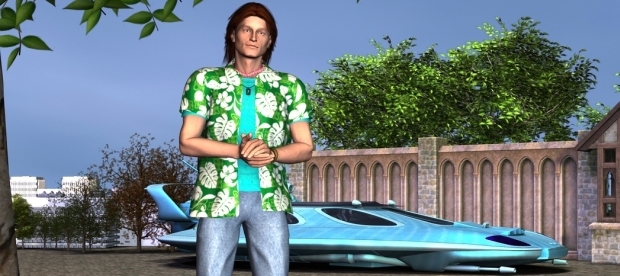 Civilian Surgical Specialist Harry Del
Civilian Surgical Specialist Harry Del
The NARC- Athena's other civilian specialist is one of the rare Rethan mutoids, specifically the 87/T mutation.
The 'T' probably stands for 'telekinesis' but Harry Del is a healer. He has the ability to 'see' into a damaged brain, or
organ, and to weave neurons back together, take apart tissue damage, crochet nerves into a working whole ... and
the instrument used is his mind. He's telekinetic on the molecular scale, and, as a powerful empath he can literally
feel someone else's tissues, their wounds, and deep injury. Such as Angel addiction, which causes massive tissue
damage on which the healer can focus. This story is pivotal to Death's Head, where
Harry is the only reason either Jarrat or Stone is still alive. But Harry Del is more. He qualified as a surgeon (even
though Earth itself does not recognize his colonial license), and he's also a master biochemist. Harry's ambition is
to develop a 'blocker' for the lethal Angel molecule. And he was well on the way, when his home, and lab, were
destroyed in Death's Head. Harry's relationship with NARC is stormy. He does his
best work in conjunction with Kip Reardon, but R&D are demanding that he perform work which is anathema.
Read this story in Scorpio. And in Aphelion
Harry Del reaches the end of his rope.
Minor characters abound throughout the books. Such as Field Engineer Lieutenant Ed Suzuki. He's
Budweisser's gunship counterpart, another veteran with decades of experience in Army and NARC gunships. He is
often called upon to retrieve the wreckage after an assignment, and when the gunships are beat up, it will be
Suzuki working around the clock, with or without Budweisser's input. And Chief Carrier Air-traffic Controller,
Lt. Krystal Jones, another Starfleet transfer. She 'came over' to NARC fast when strings were pulled by an
influential uncle; her husband had become an Angel statistic. And Chief of the NARC- Athena's Infirmary
support staff, Lt. Jagruti Patak. She's Mumbai bred and born, and another Starfleet transfer. But the next
major group of characters are the 'big boys' themselves ... the descant troops: the Ravens.
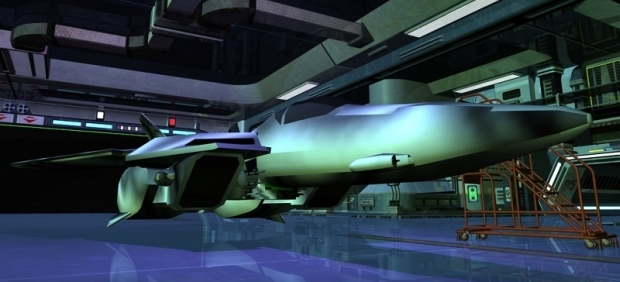 The Blue Ravens
The Blue Ravens
Blue Raven is the carrier's 'elite' descant unit. They're 25 men, a close-knit squad who live, work, play and fight
together aboard the carrier and their gunship. (A gunship is a massive vessel, armed, armored, and enabled for
interplanetary flight. Big enough to take fighter planes aboard, and have its own engineering and medical
facilities.) Of the 25 Ravens who make up a descant unit, 15 are general troops, two are medics, two are
field engineers, two are specialist pilots (one of whom will be the gunship pilot), two are communications specialists,
one is a demolition specialist, and one is a hazmat specialist. Every member of the unit will enter the field of
combat in armor; and in special circumstances, the entire unit will deploy. In a critical situation, the Ravens can
and do put 25 men 'groundside' per unit, and there are four units (Blue, Gold, Green and Red Raven).
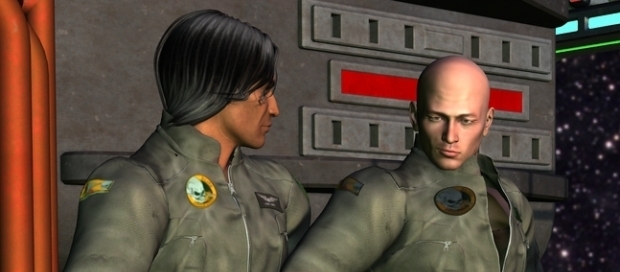 Blue Raven 6 Blue Raven Leader, Descant Trooper Chief Sgt. James Cargill 'Gil' or 'Gilly' Cronin
Blue Raven 6 Blue Raven Leader, Descant Trooper Chief Sgt. James Cargill 'Gil' or 'Gilly' Cronin
Towering even over Stone, Gil Cronin is a giant of a man with an equally big personality. He's ex-Army, like
Jarrat (though the similarity between them ends there!), and has served aboard the NARC- Athena
since long before Jarrat arrived aboard. He and Stone are old friends, and Cronin soon came to invest
implicit faith in Jarrat, also. His own partner is Blue Raven 7, Joe Ramos. Cronin is the unit's master
gunner, and a trophy-winner in inter-service events. He's originally from Chicago, but in the last decade
has called various carriers, and Darwin's World, home. Meet him in Death's Head,
in the field ... get to know him socially in Scorpio. Cronin is dedicated to
the last degree, and spends a good deal of his time 'pumping iron' to maintain a formidable physique. He
shaves his head, and wears diamond ear studs.
Blue Raven 7, deomolition specialist Joseph 'Indian Joe' Ramos
The name tells all. Joe Ramos is from a small town on the border where Nevada becomes California, and he's
of Native American and Hispanic descent. Ramos still calls Earth home, and will return there when he leaves
NARC. On furlough in the homeworlds, he and his partner, Gil Cronin, spent their downtime in the American
Southwest, with Ramos's people. These two are at the spearhead of the carrier's elite descant unit, and Ramos
is Blue Raven's demolition specialist. He wears his hair long, braided, and is as lethal at the poker table as
in the urban battlefield.
Other Blue Ravens of especial note are Blue Raven 24, Jon Semler, the unit's chief medic, in charge of the
gunship's infirmary; Blue Raven 25, Ed Munro, the unit's field medic; Blue Raven 21, Bill Parish, unit hazmat
specialist, who will be called on to deal with radioactive and chemical spills, and their effects on the men and
machinery; Blue Raven 22, field engineer Nick Kapshaw, who played a vital role in keeping the city of Inquanoc
from turning into a mountain of rubble in Scorpio; and since the first story
a major player has been the Gunship Pilot, Blue Raven 19, Sgt. Tanya Reynolds — the only woman in the
unit, and deployed only rarely since she belongs in the air, flying topcover for the unit. She's from Earth, and
returns there occasionally when domestic crises demand.
The Gold Ravens are the first level of backup for Blue. When two gunships deploy, it's usually Blue and Gold
in the forefront of the action with Green and Red on launch alert. Blue and Gold are deployed in the urban
battlefield, where the pilots and riot troops are most experienced. Green and Red are most usually held in
reserve to defend the carrier itself, and provide backup for the premier squads. In command of Gold Raven
for years now is Gold Raven 9, Sgt. Sven Hellstrom. With the same stature as Cronin and Ramos, and the
same physical toughness, he's ex-army and an obvious recruit to the Raven units. He's also much more
laconic and laid back than many of the others. He's from Darwin's World, but his parents were born in
Norway and 'followed the work' into the colonies. Gold Raven 5 is the unit's tactical specialist, Buck Dumas.
If Cronin is Blue Raven's master gunner, Dumas is Gold Raven's. He's backed up by men like Gold Raven 4,
Brad Cooper and Gold Raven 19, Ron Yu, who found themselves unexpectedly back on the job in
Stopover. Then, importantly, there's —
 Gunship pilot, Gold Raven 17 Sgt. Evelyn Lang
Gunship pilot, Gold Raven 17 Sgt. Evelyn Lang
Eve Lang only became the Gold Ravens' pilot when Pilot Karoda was killed in the Jupiter system in
Aphelion, but she had been almost as affiliated to NARC as Harry Del
since the story began in Death's Head. It was Lang who quite literally
scraped Jarrat off the ground in an alleyway in the portside city of Chell. She had parked the skyvan
there; and it was very close to the 'van where Jarrat was dumped, left for dead. Eve Lang is from
'Bally,' the town and region of Ballyntyre, far from the centers of civilization, on Rethan, where
NARC had undertaken the Death's Head assignment. The job almost cost Jarrat and Stone their
lives, and their survival came down to the healer, Harry Del ... Eve Lang's old friend. She joined
the NARC- Athena in Scorpio, flying for Blue Raven while
their usual pilot, Tan Reynolds, was home on Earth with domestic crises. With Reynolds's return
and Karoda's death, Lang was permanently assigned to Gold Raven, and was indispensable in the
action of Aphelion, where no one was certain who could be trusted,
even inside the department itself.
THE NARC BRASS
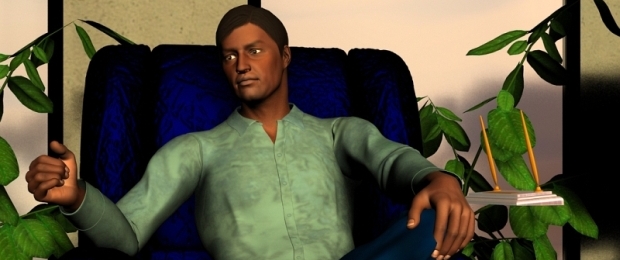 Colonel William 'Billy' Dupre
Colonel William 'Billy' Dupre
Commanding the quadrant between the homeworlds and the Cygnus Colonies is the Barbadian Colonel William
'Billy' Dupre. Like his longtime friend Gene Cantrell, he was among the first people to 'come over' to NARC, and at sixty
years of age he is now among the department's most senior officers. There is no higher authority in the
colonies, but even Dupre has his 'bosses' in the homeworlds. He worries that the homeworlds are so far
away, with a month-long signal lag, and the people of Earth are extremely out of touch with their
colonial cousins, whom they have come to deride. Dupre is unlikely to return to Earth when he retires.
For the moment, he is the buffer between NARC Central, in Chicago, and the carriers which work the
quadrant, and when he reports to a superior at all, it's to the offices of...
General Sebastian Gaunt and Colonel Mayling Gretski
They're homeworlders, from rich families and high social circles. What they know of citybottom even on their
own world is little; what they know of the colonies is even less. Gaunt is on the cusp of retirement, and it
seems Gretski will replace him. She appears to have more concern for ordinary people, and more grasp of
their plight, than Gaunt possesses, but until Gaunt stands down she can do little more than mediate. Also,
Gaunt is caught in a political trap. His rank, his position, places him in the unenviable role of liaison between
the paramilitary department itself on one side and its civilian oversight on the other. His role is an almost
political one, and he is under considerable pressure from both sides of the field. Ultimately, NARC's bosses
are senators and congressmen both from Earth and the colonies, and these people come in all kinds, from
Lenore Maddigan in Equinox to Cassius Brand in Scorpio
and Aphelion, whose son has been sealed in a cryogen tank for twenty-five years,
technically Angel-dead ... but can Harry Del bring him back from the edge, as he did for Stoney? And it seems NARC's
greatest enemies are not among the Angel syndicates ... they are among the senators of Earth itself.
|

|
afterburners: (technology): super-thrust derived in short-bursts from an engine, at the cost of wear-and-tear.
Not to be confused with what we know as "afterburners" today ... 24th century engine tech is a little more
advanced -- but the buzzword remained the same.
aphelion (term): the furthest point in the orbit of a planet around a star.
Apogee: a light space-to-surface craft designed by Yamazake.
apogee (term): the highest point in the orbit of a craft around a planet.
AR -acronym: assault rifle.
arago field: repulsion field (see).
arago sled: (technology): a grav-assist platform used to transport deadweight cargo, or a vehicle. .
Arago Technologies: manufacturer of repulsion technology; owner of the Weimann Drive patent.
ATC -acronym: air traffic control.
Auriga engine: the starship 'hyperdrive' engine immediately redating the Weinmann Drive.
autochef: catering machine stocked with raw materials; combines, flash-cooks and delivers food.
biocyber: electronic systems where components incorporate living tissue. For example, prosthetic limbs
and artificial intelligence 'mainbrains.'
bowshock: the pressure-wave created by the passage of a craft through atmosphere.
cal -abbreviation: caliber.
Chavez, Diego: the comm engineer who developed the first data conduit (see).
'chef -abbreviation: autochef (see).
Colt -arms and armor manufacturer based on Earth and Mars
combug -abbreviation: communications 'bug' designed to fit the aural channel
comm -abbreviation: communications
comm lag -abbreviation: communications lag; time taken for long-range signals to be received
courier: small, ultra-fast ship designed to deliver data faster the the data conduit (see)
CRT -acronym: comm relay terminal (not, repeat NOT, cathode ray tube!!)
cryogenic suspension (medical): suspended animation, in a cryogen gas enelope
cryotank -abbreviation: cryogen tank
DAC -acronym: Data Access Corporation
data conduit: the chain of comm boosters relaying signals over vast distances
data lag: the time lag experienced due to
data node: any individual relay booster in the data conduit
deflectors (technology): angled repulsion fields to shield against collision and inpact damage
Demolex (military): a safe, high-explosive used by humans in the field for modest charges.
Diego Chavez(location) the first deta node in the data conduit as it leaves the homeworlds system.
downrange: a given distance from point fixed in space, such as a forward observation ship.
drone (technology): any robot, domestic, industrial or military, statis, mobile or flight capable.
EMP -acronym: electromagnetic pulse.
e-space: the hyperflight conduit; an envelope of extra-normal space, for transoptic flight
flak screens (technology): overlapped, angled arago screens used for defense purposes
grav-assist (technology): partial gravity neutralization, to lighten loading on a stucture.
grav-resist (technology): the use of a repulsion field
grav-resist architecture: an improbable building that can stand only because it uses grav-assist.
ground station (technology): any array of communications aerials or antennae.
HALO -acronym: high altitude low opening (describes armored jump)
handy -colloquialism: hand-held data access portal. Any palm-top computer.
hardsuit -colloquialism: space armor designed for industry or military.
heavy lifter -colloquialism: any massive lifting body designed to carry payload to orbit.
highband (technology): communications frequencies in the upper frequencies.
high-gain (technology): receiving antennae designed to magnify very weak signals.
HK -acronym: Harrison-Koche; armor manufacuter based on Mars and Darwin's world.
holodisplay -abbreviation: holographic display projector.
hyperflight conduit: see e-space.
hyper transition (technology): the jump into e-space (see) for transoptic flight
Intelscan (technology): leading manufacturer of scan systems, based on Darwin's World.
kevlex -abbreviation: the compound of kevlar and lexan.
kevlex-titanium - impervious 'fabric' spun from a compound of kevlex and titanium 'thread'.
laidar (technolgy): the laser equivalent of radar. Tracking by laser pulse.
leech - a parasite, hard- or software, inserted into computer systems as a spy.
Kure - the dockyards, in Japan, where the NARC carriers are manufactured.
maglev -abbreviation: magnetic levitation; used to transport loads over short distance.
mainbrain: -colloquialization: a mainframe housing an AI with biocyber components. In fact,
elements of the AI are living tissue.
mass driver (technology): maglev-powered railgun designed to launch loads into orbit.
Mitsubishi Aerospace (technology): manufacturer of the super-carriers, on Earth.
mutoid (medical): a genetic mutation resulting from errors or ormissions in terraforming.
nav-deck (technology): navigation deck. Small, stable navigation platform on an aircraft.
nav-tank (technology): full-sized, 3D navigation 'tank' aboard a large ship.
Oort - the comet cloud extending outward from the orbit of Pluto, homeworlds system.
pressure skin - the sealed, pressurized hull of a habitat or dome.
parasite (technology): a bug, or leech (see) placed in computers.
QuantumData biocyber development cartel, manufacturers of the artificial intelligence at the
heart of big ships, including the NARC carriers.
railgun: a barrel-less cannon using a maglev rail to super-accelerate modest loads.
repulsion (technology): gravity-resist, a 'field' neutralizing gravity.
rimrunner -colloquialism: any ground-landing heavy cargo carrier servicing the Cygnus Colonies.
scan platform (technology): super-stabilized foundation for very delicate devices.
sleeper ships -colloquialism: the ships on which human colonists were transported 'tanked'.
tachyon communications (technology): signals boosted faster than light using the tachyon band.
tachyon band (technology): a frequency where particles (tachyons) exist at transoptic speeds.
'tanked' -colloquialism: placed into cryogenic suspension inside a cryogen tank.
terraformer fleet (technology): a fleet of robot ships dedicated to a terraforming assignment.
terraforming (technology): the process of re-engineering a planetary environment to suit humans.
thermoscan - sensor scan performed in the infrared zone; keys on heat traces.
tractors - the opposite of repulsion technology; magnified gravity, causing a 'pull' effect.
threedee -abbreviation: three dimensional holographic display projector.
transoptic (technology): faster than light.
ULF -acronym: ulta low frequency. Scan method keying on differences in the density of substances.
vacuum bloom: (medical) the rupture of subcutaneous capillaries due to exposure to vacuum.
vacuum welding: (engineering) welding by exposing surfaces to vacuum, and conjoining them.
viddrone -abbreviation: video drone. Static, mobile or flight-capable video camera platform.
vee-ree -abbreviation: VR, or virtual reality.
Weimann Drive: the current generation of starship hyperflight engine.
Weimann, Foster: developer of the Weimann Drive, founded on the existing Arago technology.
Yamazake: Yamazake Industries, an aerospace developer based on Darwin's World.
|

|
Looking back across a gulf of time, I try to recall when I first 'saw' these characters; and I confess, I actually
can't pinpoint the moment. I remember writing the first draft of DEATH'S HEAD, well over 20 years ago, but do I
recall where the idea came from, and when the characters started to 'talk to me' with their own voices? No.
As I've said elsewhere on this site, it has been a very long time indeed since I first had the idea for this universe, and it's weird, very odd, how time compresses, inside your mind. The NARC universe, its ideas and its characters, are as fresh in 2008 as in 1984, when they started 'knocking on the inside of my skull, trying to get out.' What's even more odd (and very enviable), no one ages in there!
Work it out here: Jarrat and Stone are only about six months older, now, than they were when ol' MK typed 'THE END' to the first manuscript of the first draft of the first book.
(The years have done little to improve face or physique, in my case! However, two decades of human
experience does change a person, a lot and for the better. Some time ago I was asked, if I had the chance, would I go
back 20 years and take another shot at Life, the Universe and Everything. One part of me wanted to say yes, but another part was more honest, and shuddered.)
Where did Jarrat and Stone come from? Where did any of it come from? Any good answer, I suppose, will open a window into
the mind of a writer, because plots and characters are born in the primordial goo of the imagination.
The drug war is something that never goes away, and Hollywood has used it as a device for staging massive action stories since the 1960s. I might have been thinking along those lines; or it might have been anti-terrorism that was on my mind when something creative began to gel.
I've always found science fiction to be the most comfortable place to work; I think I like the way I can fine-tune the cosmos, so long as I've pushed the scenario a couple of centuries, or more, into the future. In our own world, you always come back eventually to the inescapable truth. Justice is elusive, compassion is thin on the ground, our political heroes are shaky, the climate is shot, the planet itself is being wrecked, we're overpopulating as fast as we can go, there's little or no hope of getting true religious freedom any time soon, slavery is still alive and kicking, women are persecuted in many countries, and if you're gay, you're skating on thin ice even if you're lucky enough to live in a region where homosexuality is tolerated and actually legal!
These woes are the reality, and they won't be going away; and no matter how a writer pushes and shoves the plot of a novel to get a resolution and something close to the traditional happy ending, the reality is always there. There's a saying going around just now, 'Happy endings are for stories that haven't finished yet.' Hmmm.
What a surprise, then, that I'm drawn to SF! Also, there's no surprise if I merge SF with the drug war and the anti-terrorist scene; one is my personal preference and the other has ben driving Hollywood's output since I was still learning to do long division.
The creative process, for me as an individual writer (god knows, every writer is different), involves a series of snapshots. I get 'postcards' from a place or time, in vivid color. It's almost as if color stills from a movie just landed on my desk. Things click into place and then a face will look right at me, out of the murk of imagination. A voice will speak to me. I knew Stone's voice at once: softer, deeper than Jarrat's tenor, which also has a sharper edge. The faces were elusive for a while, but I knew they were early-thirties, Western European, for what that's worth. (Harry Del seems Indo-European to me; Joe Ramos is definitely Native American; Bill Dupre is Barbarian; Janine Cruz is Creole or Cajun ... and so on.)
I don't recall sitting down and hammering out the backstories for Jarrat and Stone; their evolution was much more organic. By the time I was done with the restoration of DEATH'S HEAD, however, I had a very firm grasp on who they are, where they come from. SCORPIO gave me little opportunity to develop them, but STOPOVER and APHELION were (for me) bliss.
The complete truth is, Jarrat has always been difficult to write. As soon as I start a scene which is told through his eyes (or from his POV), I'm very much aware of a prickle in the spine and a tension in the muscles. It's who Jarrat is, and where he's from. In STOPOVER I was able to take the detour to Sheckley and actually depict, describe, what he was up against as a kid and a teen. He survived; and survival made him what he became. Physically and mentally very tough. 'Mean, moody and magnificent,' as he's been called. In STOPOVER, you get to see why.
Then, in APHELION, I was able to do the same for Stone. Imagine the joy of actually visualizing the property in Barcelona, of taking
that ultralite out of the garage. Stoney has always been a 'comfortable fit,' to me. In fact, I have to be careful not to write him too mellow and laid back; because he's not. He's the consummate professional, with a lot of passion for the job — like Jarrat, sufficient passion for them to stay with NARC and not quit to safeguard themselves.
After STOPOVER, I do find Jarrat easier to write. I know exactly who he is. He's as comfortable a 'fit' as Stoney.
I was also asked, where would I like to take these characters in the future; and instead of rambling on, let me just paste in what I wrote then. You'll find it elsewhere on this site too, but this question is one I've already answered:
Obviously, their story is developing along definite lines. There was little or no hint of this in the 'cut' version of DEATH'S HEAD which went to press with GMP, but already, in the restored version, you can get a glimpse of what's in store. These characters think and feel; they have hopes, dreams and dreads. I'd like to see them in plotlines which allow them to explore what they want, what they don't want ... what they can achieve, and why. In STOPOVER there are some very clear indications that the characters themselves are changing — and god knows, you'd expect them to. No real, live human being would go through what they endure, and do it all the time, and not be changed by it. (That's the kind of crapola that happens on network television with tedious regularity. In last week's episode, the hero went limping offscreen behind the end credits with his leg in plaster. This week's episode starts with him water skiing or running down a suspect. Fine and dandy on TV, but anyone who's ever had a broken leg knows that months have gone by between the bone getting busted and the physio telling you it's okay to go sprinting on asphalt. I do understand that TV shows have to conform to a 'status quo' format. I'm not knocking them for it. But it's hardly realistic ... and nor would we want our escapist TV shows to be realistic.)
Oddly enough, the one time a show has tried to be realistic in recent years, viewers didn't like it: Torchwood is full of characters who are rapidly coming unglued. Their cheese is slipping off their crackers, to quote Hawkeye Pierce. Given the work they do, I do believe they'd be halfway around the bend in six months, and the show does a good job of depicting this! Mind you, there's the other side to this problem. It's what you could call the 'Uncle Donald syndrome.' In your nightmare, you're aboard the Titanic, and it's sinking, and you race to the bridge to discover the captain's Donald Duck. Seriously, think about it: the fate of the world, the future of the human race, custody of incredible alien technolgy, is in the hands of people who are rapidly going bonkers. Oooooh, dear.
But I digress! Sorry. Approaching the NARC stories, I had a decision to make. Were the characters going to be locked into the status quo of a TV format? Or were they going to develop realistically? I chose to take the second path, and I think it's worked very well. The characters were already rich in the restored DEATH'S HEAD. By APHELION, they're human. No other word for it. I like them human. I like the romance they share.
Where would I like Jarrat and Stone to go ...? Well, the answer to this is in my mind, in great detail, but I'm keeping it to myself for the moment. A lot depends on well-received APHELION is. In the end, it's all down to readers! On that note, I'll close here and urge you to download the sample chapters and enjoy!
|

Several years on from the DreamCraft reissue of NARC #1: Death's Head, it's now common knowledge that the book was
heavily cut for the GMP edition, and for the first ten years of its life, it circulated in an amputated form. Many
readers have already availed themselves of the restored edition, and in mid-2008 we're finally about to begin the
advertising which will put Mel Keegan back on the gay publishing map.
But why was the book cut in the first place? What was taken out? More importantly, how was it restored, and what was
put back on?! At the time of the reissue, Mel Keegan gave this interview, and for the re-launch of this website,
we've brought it up to date.
WHY WAS DEATH'S HEAD CUT, ORIGINALLY?
Fundamentally, it was because of pre-press problems which bedevilled GMP in 1991. I'd sold the book to the late Richard Dipple — who was a founder member of GMP and still the managing editor when I joined the company — on the synopsis. That is to say, the contract was offered, and signed, on the basis of around 10pp of outline which looked great to us both. I promised the book at about 135,000 words, which was in fact GMP's ceiling for book lengths in those days (it was all about the intricate business of web offset printing; ask me about it some time), and the book was therefore planned at 350 pages, max.
Richard Dipple and I worked extremely well together, and he was so sure of DEATH'S HEAD being a "go," he had the full-color covers printed in advance, with a design accommodating a spine thickness for 350pp. So far, so good.
The problems began when the book was finished, and involved the ending which we had both thought worked well in the outline. I was *fairly* happy with it; Richard wasn't. The original ending pivoted on the sheer irony of fate. It came down to Jarrat looking into the business-end of his own gun for the first time ... and the gun mis-fired. It was a good scene. It wasn't a *great* scene, and Richard wanted more.
He had me take the last part of the book to pieces and restructure it, which I was delighted to do. First, it was a challenge, and I've always relished a challenge! Second, I got to write more on Jarrat and Stone ... gee, what a chore.
The 'prepress panic' cropped up when I turned in the final version of the last three or four chapters. I'd forewarned Richard: rewriting the end to get a huge 'bang' out of it would make it run long. He'd said at the time, it was going to be okay ... and then the fun began.
To this day, I have no idea why there was a problem. The book had run long on the rewrite, true, and the covers were pre-printed with the fixed spine width. So make the font size (printing) smaller! At the time I asked about this, but Richard had just fallen very ill indeed (in fact he was dying, though I didn't know it). Prepress work was set into the hands of my new editor, David Fernbach, and I can only guess that David and computers and software didn't (yet) see eye-to-eye.
Because rather than the font size being reduced, the text was cut in length to fit the existing covers. Now, this is always a problem with any book that wasn't verbose or overwritten to begin with. Some writers can be "pruned" (as one idiotic editor once referred to it) without really hurting the work (Stephen King, James A. Michener, Leon Uris, Tom Clancy, Robert Ruarch, Sydney Sheldon, Ann Rice ... I like these writers and am *not* knocking them; I'm just noting that you can edit them for narrative volume without hurting their works). However, when a writer has produced a tight, 'no frills' product from which you now want to cut around 15%, or one page in every seven... you get trouble.
Anyway, the book was cut, and that was that! But the good news was, I had a copy on disk (in loooong obsolete file format: a word processor that hasn't existed commercially since 1990).
HOW WAS THE CUT DONE?
In two stages ... with some considerable angst and drama ... and with a lot of burned midnight oil!
Stage One was performed by David Fernbach, and the most immediate result was, DEATH'S HEAD almost didn't happen. The cut (I can't call it an edit) ... left a lot to be desired. It would be true to say that David still had a lot to learn in those days, and though he did become an editor with whom I had a pleasant working relationship for several years, the DEATH'S HEAD episode was difficult. The original 'cut' was performed at editing's most 'gross' level: whole paragraphs were simply cut out, whether they were vital to the plot, or not. The technology turned into 'techno-babble,' the characters were reduced to cardboard cutouts, and the plot actually fell apart, because at least two pivot-points had been cut!
The inescapable fact was, if DEATH'S HEAD had gone to press on the version which was sent to me for galley-proofing on the first round of edits, it would have been buried, unsung and unremembered ... and Mel Keegan might easily have been buried with it. It was that bad. In fact, in many places the action was judderingly clumsy, the characters unpleasant (because you had no idea what was driving them to do and say somewhat extraordinary things), and the plot was laughable (because critical points were missing).
It was only my second book in print under the pen name of Keegan, and I was painfully aware, a disaster would spell doom. I had nothing to lose, so I wrote to David ... said I understood that the book had to be massively cut (on account of the covers, and the fact it was impossible to jiggle the font size [croaking sound]), but that it wasn't going to get cut like this, and I wanted two weeks to cut it myself! To David's credit he trusted me, gave me the time, and I worked more than sixteen hours per days for almost a week, to physically jam the book between those pesky pre-printed covers. The second week was for airmail delivery! Email didn't exist in those days.
DID THE CUTS IN ANY WAY ENHANCE THE BOOK?
I can answer that in one word: no.
What had to be cut was, quite literally, anything and everything that did not drive the story forward, and without which the book will give a visible hiccup (you'd be saying, 'wait a second, when did he get killed?' Or, 'who the heck is this character?')
The task I undertook myself was to go through the book, line by line, and find around one page in every seven that could be taken out, without crippling the characters and the story. It was a daunting exercise, and one night, around two in the morning, I found myself asking fundamental questions: What does the reader NEED to know? If it wasn't critical, it got the blue-pencil treatment! I was able to cut out one, two, three paragraphs per 'cut' in maybe forty or fifty places, and this helped a lot.
It wasn't enough, of course. Here and there I had to sacrifice whole pages, where the content was 'only' backstory on the characters, or perhaps the structure of their society. Next I cut whole scenes, between 2pp and 6pp long. It was starting to hurt a lot now...
And even this was not enough to cut the book to the required length, and eventually a whole subplot had to go. There's the last remnant of it in the GMP issue of DEATH'S HEAD ... the remnant is actually there because I had run out of time. It was three in the morning, I had to get the manuscript in the mail, and the 'stub' of the plot didn't hurt. I'd already brought the book in with about a page to spare! So I quit while I was ahead and sent it to the printer.
The end result is a very readable book, with only one or two "gaps" in the plot where you KNOW something was taken out for some reason. I've worried for ten years that one of the gaps was going to be painfully visible, but (fortunately) the patch-up job I did on it was good enough to cover a multitude of sins!
However, you're going to be amazed when you get the uncut version...
HOW WAS THE BOOK RESTORED?
I was able to go back to the original disks, and found a way to process-through the old, obsolete word processor files. It involved "washing" them through email, to get rid of miles of passenger code which caused them to go haywire in a modern word processor. Most of the original text survived ... some had existed only on paper, and has been lost for years, but luckily I have a good memory!
Once large sections of the original book had been pieced back together from fragments and backups, it was much easier to get it into shape, and my main job was in making sure it was all coherent, and giving DEATH'S HEAD the final 'fine tune' which EQUINOX had enjoyed ten months before.
The fine-tune was in the details ... specifically, technicalities. For instance, when DH was written back in 1990, you would say things like. 'We'll handle it, computer-to-computer,' because if you didn't, readers would imaging people running back and forth with physical documentation. These days, the statement seems (and is) redundant!
I was also able to restore some of the technical stuff, where the absence of details has annoyed me all along. For instance, since 1991, you may have assumed that CRT is an acronym for Cathode Ray Tube. But 'CRT' hasn't been used in decades even now, and in the Twenty Fourth Century, one hardly thinks they'll be using cathode ray technology! In fact, CRT was always the acronym for comm-relay terminal. In other words, a video repeater, where the ops room on the carrier is monitoring the pilot's displays.
All this was the tip of the iceberg!
WHAT KIND OF MATERIAL IS BEING PUT BACK IN?
The restored material falls into three categories, and they're almost like skins on an onion, or layers in a club sandwich!
First, you have the 'local color' material. This would take the form of whole paragraphs, perhaps as much as half a page, which described a place, backstoried a character, rationalized an action ... none of it drove the plot forward, so ... chop! Losing this material was actually very painful, because 'local color' is what brings a scene to life, makes it seem real. If you would like to see some "comparative texts," jump to the bottom of this page, where a wedge of material from the old 'Special Presentation' has been salvaged and 'remounted.'
Second, you have the full scenes which were either dropped or truncated. In the cutting, I would decide what was critical to the plot, express it first and fast, and drop the rest. In the restored version, the full scene plays out right to the end ... or, the scene appears, where it never appeared at all in the old issue!
Finally, you have the whole subplot which was dumped, and this is where the majority of the cut was done. In fact, I have to be very careful what I say here, because I don't want to get into "plot spoilers!" Suffice to say, there's a big, yawning plot gap at the end of the old issue which has been fixed.
Added together, all the new material in this issue works out to about 25,000 words, but it's not all in a chunk! You will start to notice new stuff in the very first paragraph!
HOW MUCH TEXT IS BEING RESTORED?
Simply stated, virtually all of it! Everything I can find on a disk or on paper, from years ago. It amounts to about 25,000 words!
You'll notice the biggest changes toward the end of the book, where the subplot has been built back in; but whole new scenes start to make their appearance much earlier, somewhere around page 130 in the DreamCraft edition. From that point on, you'll find the book taking off in some directions you never expected! But even before that, as early as the first paragraph, the restorations begin.
For example, grab your copy right now, and compare the paper version with the first page of the DreamCraft edition:
One of the big rimrunners was on prelaunch procedures. The acrid stink of the freighter's exhaust, the din of its engines, rolled about the docking bays. As the drive began to run up to launch thrust the noise reached a painful crescendo. In the thick darkness behind the trashpack, Kevin Jarrat pushed his knuckles into his ears, waited for the punishing shockwave of launch, but after almost a minute on test the engines shut back to just above idling.
-----The alley was lit only by reflected light, a confusion of red and green, reaching weakly about the curvature of Dock Row. Smog from the lifter's exhaust thickened the air to chemical soup. It was hard to see, difficult to breathe, and the acid smog made a man's lungs burn. Jarrat took his hands from his ears as the rimrunner's engines shut back and slid the Colt AP-60 out of the holster he wore concealed beneath his jacket.
-----The weapon had warmed in contact with his body. Its familiar, even reassuring weight filled his right fist while his belly churned with what he would always think of as 'stage fright.' No matter how often he found himself in situations like this it was the same. Training, simulation and hard, real-world experience honed the skills, sharpened the reflexes, but the inescapable fact was, he could die in this alley between the docking bays. His life expectancy might be measured in minutes.
-----He swallowed hard on a dry throat and pulled back the charger that ran along the top of the black steel barrel.
-----Primed, the Colt would fire ten hollow-nosed, teflon-coated rounds per second. Those rounds could pierce two centimeters of steel plate at a hundred meters range. At the kind of range in this alley on Dock Row they would fragment an unarmored civilian vehicle. The knowledge made Jarrat's heart beat a little easier.
-----Behind the trashpack, he stood with both shoulders pressed against the brickwork. At his side was a smaller man who clutched a big handgun in both fists. Roon leaned flat against the plastex side of the dumpster and, as Jarrat watched, he moved out to peer up the alley into the murk. He ducked back again fast.
-----"You see them, Roon?" Jarrat hissed. His voice just rose above the muted roar of the rimrunner's idling engines.
-----"Can't see nothing," Roon yelled over the noise, and hunched over to cough on the smog. "Too goddamned dark, isn't it?"
-----"There's no shoot hole up there," Jarrat mused. "Nowhere to hide." He knew the warren of city bottom around the spaceport well after eight weeks of living and working on the streets of Chell.
-----"But some stupid bugger's parked a Skyvan parked at the end. The shooters have to be tucked in behind." Roon gave Jarrat's dim form one glance. "Why don't you use that cannon of yours and burn it?"
End of first page! The restorations are not subtle, they're major, even here, and this early in the novel many take the form of 'amplification' of text which was, in the GMP issue, bald to the point where I was often wrestling with two-dimensionality. You're riding a fine line; on one side of it is concise writing ... on the other, the naive and callow. Bringing DEATH'S HEAD in on target was the edit from hell, and I'll be forever grateful that I was allowed to do it myself! An external editor couldn't possibly do this work unless s/he had lived and breathed the novel for months (which editors don't, and can't, do, for simple reasons related to time, money and sanity!)
THE NEW COVERS FOR THE 2008 EDITION ARE A KNOCK-OUT...
The new cover are tremendous, all of this ... these are serious covers, and actually very close to the vision of the jackets I've had in mind all along. Designing the characters yet again was enormous fun, and if you compare the Jarrat and Stone who feature on the new jacket, and in the promotional videos, with the actual descriptions of these guys, they're spot on. We got pretty close with the first DreamCraft edition of EQUINOX (Stoney was dead right), but Jarrat was never quite right. He's difficult to 'see,' sometimes. My compliments to the artist for persevering, even when I asked for so many 'tweaks' that Jade could have been forgiven for telling me where to go go. Cheers also to Dreamraft for the investment of time, effort and financing. DEATH'S HEAD is reborn, and the new NARC books are already off to a great start before the ad campaign.
Comparison texts: the early-90s GMP version and the DreamCraft restoration:
Restorations take three basic forms. The first is all those 'local color'
paragraphs (such as those given below in split-screen form, as
'comparative' texts). These can be likened to the skins on an onion or the
layers in a club sandwich. The more layers you have, the more flavor you
get. Delete the layers, and though the sandwich is still edible, it doesn't
taste as good. Likewise, on instructions from GMP, on account of
the
prepress panic they were having (see above, on this page), I cut the book, winding up with a very
readable novel, but without the side dishes and the relish!
Next come the entire restored scenes (between one and
six pages in length, each). Lastly, a whole sub-plot which contributes the
final twist to the end of the book, which was missing from GMP's ussue.
 The restorations take place on every page of the book, and begin inside
the first paragraph! It's impossible to show you more than a tiny part of
the work here, but for sheer fascination's sake, there's a wedge of
'before and after' texts below, from the 'onion skin' category. The other
categories are almost impossible to address here. As an example, a whole
PAGE was cut out of the scene where Stoney appears briefly in the yards
at Roadrunner Charter and Salvage, outside Ballyntyre! Then, there's almost
a page missing from the end of the scene where Stoney and Riki Mitchell are
together in the hotel in Eldorado ... *that* missing scene gave you an
insight into Kevin Jarrat's youth, on Sheckley, before he enlisted! (No few
readers have written in, asking to know more about the characters. In fact,
a lot of their backstory was done for DEATH'S HEAD, and has been in the
desk drawer for ... how many years?
The restorations take place on every page of the book, and begin inside
the first paragraph! It's impossible to show you more than a tiny part of
the work here, but for sheer fascination's sake, there's a wedge of
'before and after' texts below, from the 'onion skin' category. The other
categories are almost impossible to address here. As an example, a whole
PAGE was cut out of the scene where Stoney appears briefly in the yards
at Roadrunner Charter and Salvage, outside Ballyntyre! Then, there's almost
a page missing from the end of the scene where Stoney and Riki Mitchell are
together in the hotel in Eldorado ... *that* missing scene gave you an
insight into Kevin Jarrat's youth, on Sheckley, before he enlisted! (No few
readers have written in, asking to know more about the characters. In fact,
a lot of their backstory was done for DEATH'S HEAD, and has been in the
desk drawer for ... how many years?
 To put these examples of the
restoration in context, you'd need to have your old copy handy, and we'd
have to upload many pages here, then you'd have to sit down in front
of the PC and read both! That's probably not realistic, but what we can
do here is give a whole bundle of shorter texts which illustrate how
the book shrank in the cutting, and how it grew back in the restoration!.
For instance...
To put these examples of the
restoration in context, you'd need to have your old copy handy, and we'd
have to upload many pages here, then you'd have to sit down in front
of the PC and read both! That's probably not realistic, but what we can
do here is give a whole bundle of shorter texts which illustrate how
the book shrank in the cutting, and how it grew back in the restoration!.
For instance...
A selecion, from Chapter 1:
an example of 'local color' which was cut to save about
12 lines (around a third of a page in the GMP typset).
The restoration simply enriches the narrative. This
kind of restoration has taken place on almost every page...
|
From the GMP/Millivres Issue:
Turning back toward the trashpack, Jarrat saw Roon sitting on
the concrete, moaning inarticulately. He had walked half a dozen
steps when he felt the sudden stab of pain in his left shoulder.
It raced through his nervous system like an electric shock and
cold sweat broke from every pore as his vision blurred for an
instant. Then he was in complete command of his senses again, and
spun back toward Vazell, ignoring the little blade that had lodged
in his muscles.
 It was supposed to have killed him. The look on Vazell's pasty
face said as much. The obese jowls quivered in genuine terror.
Jarrat raised the Colt again. Pain spurred him to anger, and for a
moment he aimed squarely into the man's belly. Only then did he
begin to think, and he twitched the Colt aside, aimed just as
precisely but for a different target.
It was supposed to have killed him. The look on Vazell's pasty
face said as much. The obese jowls quivered in genuine terror.
Jarrat raised the Colt again. Pain spurred him to anger, and for a
moment he aimed squarely into the man's belly. Only then did he
begin to think, and he twitched the Colt aside, aimed just as
precisely but for a different target.
|
After restoration:
Turning back toward the trashpack, Jarrat saw Roon sitting on the concrete, moaning inarticulately. He had walked a half-dozen steps when he felt the sudden stab of pain in his left shoulder. It raced through his nervous system like an electric shock and cold sweat broke from every pore as his vision blurred for an instant. He sucked in a breath as dread rushed through him in the wake of the pain — it could only be a quilldart.
 They were stealth weapons, devious, with no iota of the city bottom warrior's perverse sense of honor: they were for murder, and most often poisoned or drugged. He should have expected it of Vazell. Jarrat knew all this and froze, feeling for his extremities, blinking hard as his senses first spun in shock and then stabilized into surreal, icy calm. Automatics kicked in, the instincts of a decade of training, simulations and experience
They were stealth weapons, devious, with no iota of the city bottom warrior's perverse sense of honor: they were for murder, and most often poisoned or drugged. He should have expected it of Vazell. Jarrat knew all this and froze, feeling for his extremities, blinking hard as his senses first spun in shock and then stabilized into surreal, icy calm. Automatics kicked in, the instincts of a decade of training, simulations and experience
 Nothing. So Vazell kept a pocketful of darts, and tipped them with drug or poison when he needed them. But he could not do it one-handed, and this one was 'bare,' flung out of desperation, spite or fury. It had been aimed for the back of his neck, Jarrat knew. Maimed as he was, prone in the half-dark, Vazell was no more than a hand's span off-target.
Nothing. So Vazell kept a pocketful of darts, and tipped them with drug or poison when he needed them. But he could not do it one-handed, and this one was 'bare,' flung out of desperation, spite or fury. It had been aimed for the back of his neck, Jarrat knew. Maimed as he was, prone in the half-dark, Vazell was no more than a hand's span off-target.
 Seconds passed and Jarrat's head was still clear. He was in complete command of his senses when he spun back toward Vazell, for the moment ignoring the little barbed blade that had lodged in his muscles.
Seconds passed and Jarrat's head was still clear. He was in complete command of his senses when he spun back toward Vazell, for the moment ignoring the little barbed blade that had lodged in his muscles.
 The dart was surely intended to kill. Lodged in Jarrat's neck at the base of his skull, it would have. Vazell's eyes were bulging, insectoidal in the nasty, pasty face. The obese jowls quivered now in genuine terror. Jarrat raised the Colt again. Pain spurred him to anger, and for a moment he aimed squarely into the man's belly. Only then did he begin to think, and he twitched the Colt aside, aimed just as precisely but for a different target.
The dart was surely intended to kill. Lodged in Jarrat's neck at the base of his skull, it would have. Vazell's eyes were bulging, insectoidal in the nasty, pasty face. The obese jowls quivered now in genuine terror. Jarrat raised the Colt again. Pain spurred him to anger, and for a moment he aimed squarely into the man's belly. Only then did he begin to think, and he twitched the Colt aside, aimed just as precisely but for a different target.
|
A selecion, from Chapter 3:
this is a good example of how the 'flavor' of the work was
diminished in the cutting. This textual amputation was
necessary to save around 12 lines (a third of a page):
|
From the GMP/Millivres Issue:
He left Lee and jogged down the twisting stairway, out through
the back vestibule and into the gardens. The sun was low on the
horizon, blazing in the early evening. The sprinkler system
cascaded water in great arcs across the lawns, and rainbows danced
in the spray. Chell stood on the equator. Spaceports were always
situated on or near the equator so that launching ships could get
the maximum possible kick off the planet's rotation. The city had
grown up about it over two hundred years before. Now, Chell was
old and decaying. Only its neon and plate glass maintained the�pretence of vigor.
 Squealing echoed up from the pool...
Squealing echoed up from the pool...
|
After restoration:
Reluctant, resigned, he left Lee and jogged down the twisting stairway, out through the back vestibule and into the gardens. He had forgotten how many times he had made friends, found lovers, in deep cover assignments, and in the end walked away. In the end, the only constant was Stone, but he was going to miss Lee. The kid deserved better.
 The sun was low on the horizon, blazing in the early evening. The sprinkler system cascaded water in great arcs across the lawns, and rainbows danced in the spray. Chell stood squarely on the equator. Spaceports were always situated on or near the equator so launching ships could get the maximum possible kick off the planet's rotation.
The sun was low on the horizon, blazing in the early evening. The sprinkler system cascaded water in great arcs across the lawns, and rainbows danced in the spray. Chell stood squarely on the equator. Spaceports were always situated on or near the equator so launching ships could get the maximum possible kick off the planet's rotation.
 The Rethan colony had grown fast over two hundred years since the arrival of the first fleet, the terraformers who took a promising world and beat it into shape for human habitation. Now, the city of Chell — originally named after the explorer Herman Schell, and long mispronounced, mis- spelled — had grown old and was in a process of decay. Only its neon and plate glass maintained the pretense of vigor. The truth, Jarrat thought bleakly, was down there in city bottom, where beauty and squalor lived cheek by jowl and the 'angel pack' ran wild from sunset to sunup.
The Rethan colony had grown fast over two hundred years since the arrival of the first fleet, the terraformers who took a promising world and beat it into shape for human habitation. Now, the city of Chell — originally named after the explorer Herman Schell, and long mispronounced, mis- spelled — had grown old and was in a process of decay. Only its neon and plate glass maintained the pretense of vigor. The truth, Jarrat thought bleakly, was down there in city bottom, where beauty and squalor lived cheek by jowl and the 'angel pack' ran wild from sunset to sunup.
 Squealing echoed up from the pool...
Squealing echoed up from the pool...
|
A selecion, from Chapter 4:
an example of an 'onion skin' layer which
was removed to save a little more space. Detail and 'color' were stripped
out and the remaining text was reworded for sheer simplicity. We lost
an overview of the technology too; the finalized text, for brevity and
simplicity, has to nominate a 'radio man,' and just say he's having trouble.
It's very bald and shallow. Cuts such as this
were made in hundreds of places, in addition to whole scenes being
removed and, finally, a whole subplot ... oddly enough, it's the multitudes
of small cuts that hurt most. They're cumulative: if you make enough of them,
and if you make the wrong ones, you can end up with a 'comic book' narrative.
|
From the GMP/Millivres Issue:
The radio man had turned up the gain as far as it would go but
the voices were still indistinct, mushed. They were routed to the
computer for audio enhancement before being played back. Stone
knew what he was hearing was on a two minute delay, and his heart
beat heavily at his ribs. The voices were being picked up by the
powerful condenser mic on Jarrat's R/T, but Kevin himself was not
sending anymore. The radio relayed the whole discourse in
distorted form. The spaceport tracking gear nearly destroyed the
signal, made it impossible to get an accurate locational fix.
Stone's mouth was dry as dust.
|
After restoration:
The Athena's massive aerials were ranged on Chell's spaceport sector
and the gain was cranked to maximum, but the voices were still indistinct,
mushy against an impenetrable wall of harsh white noise from the 'port's
civilian airsearch network. Incoming radio was routed to the computer for
enhancement before being played back, and a specialist tech wrestled with
the equipment. Stone knew what he was hearing was on an unavoidable two
minute delay, and his heart beat heavily at his ribs.
 The voices were being picked up by the powerful condenser mic on
Jarrat's R/T, but Kevin himself was not sending anymore. The radio relayed
the whole discourse in distorted form, but the spaceport radars were so
pervasive, it was impossible to get an accurate locational fix. Stone's
mouth was dry as dust. He touched a key on the headset he had pulled on
when Kevin called home, and switched up to the encrypted ship-to-ship channel.
The voices were being picked up by the powerful condenser mic on
Jarrat's R/T, but Kevin himself was not sending anymore. The radio relayed
the whole discourse in distorted form, but the spaceport radars were so
pervasive, it was impossible to get an accurate locational fix. Stone's
mouth was dry as dust. He touched a key on the headset he had pulled on
when Kevin called home, and switched up to the encrypted ship-to-ship channel.
|
A selecion, from Chapter 14:
This is a good example of how scenes were truncated to dump
material which wasn't going to make it into the final 'cut'
of the GMP issue. It's also a good example of how 'flavor'
is stripped out along with these pockets of text.
|
From the GMP/Millivres Issue:
...[Curt Gable] had a point. Jarrat reined back on his temper. "Give me a
minute, Curt. I've got to make a heartfelt farewell and then you
can take me away from all this."
 "Take your time," Gable sang. "You've got plenty of it."
"Take your time," Gable sang. "You've got plenty of it."
 Jarrat returned to the house, sun blind in the sudden dimness.
At the window, Simon was gaping speechlessly at the aircraft. Art
Pedley winked at Kevin, silently celebrating his return to the
land of the living. Evelyn stood at the door, admiring the sleek,
savage configuration of the military warplane. On its flank was
the NARC decal. Jarrat took her hands as she turned toward him.
"I have to leave now. I'll have the computer transfer credit
into your bank to cover the work that was done on me. Next time
you find a pulp in the gutter, pick him up. Cheat them out of
another one, on me." He took her head between gentle hands.
Jarrat returned to the house, sun blind in the sudden dimness.
At the window, Simon was gaping speechlessly at the aircraft. Art
Pedley winked at Kevin, silently celebrating his return to the
land of the living. Evelyn stood at the door, admiring the sleek,
savage configuration of the military warplane. On its flank was
the NARC decal. Jarrat took her hands as she turned toward him.
"I have to leave now. I'll have the computer transfer credit
into your bank to cover the work that was done on me. Next time
you find a pulp in the gutter, pick him up. Cheat them out of
another one, on me." He took her head between gentle hands.
 "I'll see you again?"
"I'll see you again?"
 "Of course you will." He smiled. "Busting Death's Head won't
stop the Angel Trade. We'll be here for some time, and we'll be
rotated back later. This planet is notorious, you know. Big
population. I'd stick around if I could, love, I really would. But
that friend of mine who was here this morning looking for me has
just got himself shot down in the battle over Chell. Christ knows
where he is, and I owe him one. I owe him a whole bunch. He
followed me half way 'round this planet to find me here. Now I
have to find him."
"Of course you will." He smiled. "Busting Death's Head won't
stop the Angel Trade. We'll be here for some time, and we'll be
rotated back later. This planet is notorious, you know. Big
population. I'd stick around if I could, love, I really would. But
that friend of mine who was here this morning looking for me has
just got himself shot down in the battle over Chell. Christ knows
where he is, and I owe him one. I owe him a whole bunch. He
followed me half way 'round this planet to find me here. Now I
have to find him."
 She forced a smile. "I hear you talking, Captain. Damn. I just
gassed the afternoon away with a NARC Captain... The job comes second?"
She forced a smile. "I hear you talking, Captain. Damn. I just
gassed the afternoon away with a NARC Captain... The job comes second?"
 "First," he corrected, "second and last." Then he sighed, an
admission of the truth. "Right after Stoney."
"First," he corrected, "second and last." Then he sighed, an
admission of the truth. "Right after Stoney."
 Evelyn frowned. "Your lover?"
Evelyn frowned. "Your lover?"
 "No," Jarrat said quietly. "Well, not yet. It might happen. I
hope it does. We'll be breaking every rule in the book, but what
the hell? We're not supposed to get involved, they just don't like
it when their boys get friendly. Too many of us get greased, like
I almost did." He touched her cheek. "I'll call you."
"No," Jarrat said quietly. "Well, not yet. It might happen. I
hope it does. We'll be breaking every rule in the book, but what
the hell? We're not supposed to get involved, they just don't like
it when their boys get friendly. Too many of us get greased, like
I almost did." He touched her cheek. "I'll call you."
 She watched him lope out to the shuttle, tall and lithe, and
shook her head over him. "No, you won't. You'll find your Stoney,
who busted his buns to find you, and you'll forget. Why the hell
should you remember?"
She watched him lope out to the shuttle, tall and lithe, and
shook her head over him. "No, you won't. You'll find your Stoney,
who busted his buns to find you, and you'll forget. Why the hell
should you remember?"
 The twin ramjets ignited and spat sheets of flame. The
repulsion downwash hammered on the concrete, then the acceleration
shoved Jarrat back into the angled couch as Curt Gable sent the
space-to-surface shuttle spearing upward with its wings and
canards inswept. In the back, Jarrat enjoyed the ride as apassenger.
The twin ramjets ignited and spat sheets of flame. The
repulsion downwash hammered on the concrete, then the acceleration
shoved Jarrat back into the angled couch as Curt Gable sent the
space-to-surface shuttle spearing upward with its wings and
canards inswept. In the back, Jarrat enjoyed the ride as apassenger.
 It was two months since he had seen the carrier. The ship hung
over Chell in a high geosynchronous orbit. Chell was the nucleus
of it all. If it happened, it happened in the fetid, smog-toxic
warren of the spaceport.
It was two months since he had seen the carrier. The ship hung
over Chell in a high geosynchronous orbit. Chell was the nucleus
of it all. If it happened, it happened in the fetid, smog-toxic
warren of the spaceport.
 The carrier was a big ship, but radar transparent. Chell
Central was oblivious to it on the tracking screens. Coded radio
location was used to mark its position for the safety of incoming
traffic, but it could ride in orbit without Death's Head being
aware of it. Below, Chell sprawled about the equatorial launch
facilities.
The carrier was a big ship, but radar transparent. Chell
Central was oblivious to it on the tracking screens. Coded radio
location was used to mark its position for the safety of incoming
traffic, but it could ride in orbit without Death's Head being
aware of it. Below, Chell sprawled about the equatorial launch
facilities.
 On the fringe of space, as the stars appeared, Jarrat keyed in
his headset. Gable was about to turn the spaceplane for home when
he said, "I want to take a look at the battle zone."
On the fringe of space, as the stars appeared, Jarrat keyed in
his headset. Gable was about to turn the spaceplane for home when
he said, "I want to take a look at the battle zone."
|
After restoration:
...[Curt Gable] made a good a point. Jarrat reined back on his temper. "Give me a minute, Curt. I've got to make a heartfelt farewell and then you can take me away from all this."
 "Take your time," Gable sang. "You've got plenty of it."
"Take your time," Gable sang. "You've got plenty of it."
 Jarrat returned to the house, sun-blind in the sudden dimness. At the window, Simon was gaping speechlessly at the aircraft. Art Pedley winked at Kevin, silently celebrating his return to the land of the living. Evelyn stood at the door, admiring the sleek, savage configuration of the military warplane. On its flank was the NARC decal, the steel glove, the white dove. Jarrat took her hands as she turned toward him.
Jarrat returned to the house, sun-blind in the sudden dimness. At the window, Simon was gaping speechlessly at the aircraft. Art Pedley winked at Kevin, silently celebrating his return to the land of the living. Evelyn stood at the door, admiring the sleek, savage configuration of the military warplane. On its flank was the NARC decal, the steel glove, the white dove. Jarrat took her hands as she turned toward him.
 "I have to leave now. I'll transfer the credit to your bank to cover the work that was done on me. Next time you find a pulp in the gutter, pick him up. Cheat them out of another one, on me." He took her head between gentle hands.
"I have to leave now. I'll transfer the credit to your bank to cover the work that was done on me. Next time you find a pulp in the gutter, pick him up. Cheat them out of another one, on me." He took her head between gentle hands.
 "I'll see you again?"
"I'll see you again?"
 "Of course you will." He smiled. "Busting Death's Head won't stop the Angel Trade. We'll be here for some time, and we'll be rotated back later. This whole colony is notorious, you know. Big population. I'd stick around if I could, love, I really would. But, you remember that friend of mine who was here this morning looking for me? He just got himself shot down in the battle over Chell. Christ knows where he is, and I owe him one. In fact, I owe him a whole bunch. He followed me half way 'round this planet to find me here. Now I have to find him."
"Of course you will." He smiled. "Busting Death's Head won't stop the Angel Trade. We'll be here for some time, and we'll be rotated back later. This whole colony is notorious, you know. Big population. I'd stick around if I could, love, I really would. But, you remember that friend of mine who was here this morning looking for me? He just got himself shot down in the battle over Chell. Christ knows where he is, and I owe him one. In fact, I owe him a whole bunch. He followed me half way 'round this planet to find me here. Now I have to find him."
 She forced a smile. "I hear you talking, Captain. Damn. I just gassed the afternoon away with a NARC Captain ... the job comes second?"
She forced a smile. "I hear you talking, Captain. Damn. I just gassed the afternoon away with a NARC Captain ... the job comes second?"
 "First," he corrected, "second and last." Then he sighed, an admission of the truth. "Right after Stoney."
"First," he corrected, "second and last." Then he sighed, an admission of the truth. "Right after Stoney."
 Evelyn frowned. "Your lover?" It was a shrewd guess.
Evelyn frowned. "Your lover?" It was a shrewd guess.
 "No," Jarrat said quietly. "Well, not yet. It might happen. I hope it does. We'll be breaking every rule in the book, but what the hell? We're not supposed to get involved, they just don't like it when their boys get friendly. Too many of us get greased, like I almost did." He touched her cheek. "I'll call you. And I want you to call those friends of yours are Eldorado Tac, right now. Better safe than sorry. If they stall you, or if there's trouble they can't handle, call the carrier. The code is NARC-Athena."
"No," Jarrat said quietly. "Well, not yet. It might happen. I hope it does. We'll be breaking every rule in the book, but what the hell? We're not supposed to get involved, they just don't like it when their boys get friendly. Too many of us get greased, like I almost did." He touched her cheek. "I'll call you. And I want you to call those friends of yours are Eldorado Tac, right now. Better safe than sorry. If they stall you, or if there's trouble they can't handle, call the carrier. The code is NARC-Athena."
 "There's trouble, and you'll be here?"
"There's trouble, and you'll be here?"
 "I owe you," Jarrat said honestly. "The only way I wouldn't be here is if something else is blowing up in our faces someplace else, in which case I'll ..." He smiled faintly. "I'll send you a gunship."
"I owe you," Jarrat said honestly. "The only way I wouldn't be here is if something else is blowing up in our faces someplace else, in which case I'll ..." He smiled faintly. "I'll send you a gunship."
 "No joke?" Evelyn sounded skeptical.
"No joke?" Evelyn sounded skeptical.
 "No joke," Jarrat insisted. "But I'd rather be here myself, pay my own debts. If I can't make it personally when the trouble shows, you get your gunship to fix it fast, and I'll be along later." He gave her and Pedley a grin. "I'll be in touch."
"No joke," Jarrat insisted. "But I'd rather be here myself, pay my own debts. If I can't make it personally when the trouble shows, you get your gunship to fix it fast, and I'll be along later." He gave her and Pedley a grin. "I'll be in touch."
 She watched him lope out to the shuttle, tall and lithe, and shook her head over him. "No, you won't. You'll find your Stoney, who busted his buns to find you, and you'll forget. Why the hell should you remember?"
She watched him lope out to the shuttle, tall and lithe, and shook her head over him. "No, you won't. You'll find your Stoney, who busted his buns to find you, and you'll forget. Why the hell should you remember?"
 It was Art Pedley who said quietly, at her shoulder, "He'll remember because he owes you everything he has. His life. And you heard him. He pays his debts."
It was Art Pedley who said quietly, at her shoulder, "He'll remember because he owes you everything he has. His life. And you heard him. He pays his debts."
 "I wonder," Evelyn whispered, eyes narrowed on the retreating figure.
"I wonder," Evelyn whispered, eyes narrowed on the retreating figure.
 The twin ramjets ignited and spat sheets of flame. The repulsion downwash hammered on the concrete, then the acceleration shoved Jarrat back into the angled couch as Curt Gable sent the space-to-surface shuttle spearing upward with its wings and canards inswept. In the back, Jarrat enjoyed the ride as a passenger.
The twin ramjets ignited and spat sheets of flame. The repulsion downwash hammered on the concrete, then the acceleration shoved Jarrat back into the angled couch as Curt Gable sent the space-to-surface shuttle spearing upward with its wings and canards inswept. In the back, Jarrat enjoyed the ride as a passenger.
 It was two months since he had seen the carrier. The ship hung over Chell in a high geosynchronous orbit, sensor-shielded, invisible to civilian systems, even the spaceport radars, its radio traffic encrypted to the point where the general public in the city might not even know it was there. Coded radio location was used to mark its position for the safety of incoming traffic, but it could ride in orbit with the security of the invisible. Hal Mavvik had not known it was there for six of the seven weeks Jarrat had spent in deep cover, in the palace. Below the kilometer-long slab-shape of the ship, Chell sprawled about the equatorial launch facilities.
It was two months since he had seen the carrier. The ship hung over Chell in a high geosynchronous orbit, sensor-shielded, invisible to civilian systems, even the spaceport radars, its radio traffic encrypted to the point where the general public in the city might not even know it was there. Coded radio location was used to mark its position for the safety of incoming traffic, but it could ride in orbit with the security of the invisible. Hal Mavvik had not known it was there for six of the seven weeks Jarrat had spent in deep cover, in the palace. Below the kilometer-long slab-shape of the ship, Chell sprawled about the equatorial launch facilities.
 Chell was the nucleus of it all. If it happened, it happened in the fetid, smog-toxic warren of the spaceport. On the fringe of space, as the sky ran through mauve to black and the stars appeared, Jarrat keyed in his headset. Gable was about to turn the spaceplane for home when he said, "I want to take a look at the battle zone."
Chell was the nucleus of it all. If it happened, it happened in the fetid, smog-toxic warren of the spaceport. On the fringe of space, as the sky ran through mauve to black and the stars appeared, Jarrat keyed in his headset. Gable was about to turn the spaceplane for home when he said, "I want to take a look at the battle zone."
|
|
|
|

























 All sample readings save for THE ENDGAME OMNIBUS
are in a PDF format which
suits desktops, laptops and palmtops, both Windows PC and Mac, plus ILiad, Palm, Pocket PC and so on. For the ENDGAME three-in-one, we can oly give you sample
readings from BOOK ONE: SCIMITAR ... anything else will either not make sense, or just hit you with plot spoilers, since SCIMITAR - BASILISK - ENDGAME is one
story, not three. You'll find the ENDGAME sample chapter simply pasted to its page here on-site; the rest of these samples ... if you need to
download Adobe Acrobat, get it now and install it, before trying to
open the documents. Click on the icon above to visit Adobe.com.
(From our eBooks store, you can also download Microsoft Reader books, suited to the Pocket PC.)
All sample readings save for THE ENDGAME OMNIBUS
are in a PDF format which
suits desktops, laptops and palmtops, both Windows PC and Mac, plus ILiad, Palm, Pocket PC and so on. For the ENDGAME three-in-one, we can oly give you sample
readings from BOOK ONE: SCIMITAR ... anything else will either not make sense, or just hit you with plot spoilers, since SCIMITAR - BASILISK - ENDGAME is one
story, not three. You'll find the ENDGAME sample chapter simply pasted to its page here on-site; the rest of these samples ... if you need to
download Adobe Acrobat, get it now and install it, before trying to
open the documents. Click on the icon above to visit Adobe.com.
(From our eBooks store, you can also download Microsoft Reader books, suited to the Pocket PC.)
 READER ALERT / CAVEAT: the sample readings offered here encompass about the first 10% of
these works, and they're uncensored, unabridged. If you're disturbed by candid descriptions of
same-gender romance, or by realistic violence, please don't download! These readings are not intended
for younger readers. By clicking to open the documents, you agree that you are of age in your local
jurisdiction; you know what you are about to read; and the material won't disturb ... 'nuff said.
READER ALERT / CAVEAT: the sample readings offered here encompass about the first 10% of
these works, and they're uncensored, unabridged. If you're disturbed by candid descriptions of
same-gender romance, or by realistic violence, please don't download! These readings are not intended
for younger readers. By clicking to open the documents, you agree that you are of age in your local
jurisdiction; you know what you are about to read; and the material won't disturb ... 'nuff said.
 NARC #1: DEATH'S HEAD UNABRIDGED
NARC #1: DEATH'S HEAD UNABRIDGED NARC #2: EQUINOX
NARC #2: EQUINOX NARC #3: SCORPIO
NARC #3: SCORPIO NARC #3.5: STOPOVER
NARC #3.5: STOPOVER NARC #4: APHELION
NARC #4: APHELION NARC #5-6-7: ENDGAME OMNIBUS
NARC #5-6-7: ENDGAME OMNIBUS














 Jarrat says at
one point, he was probably lucky to not become a user. Many of his friends
were not so lucky, and one friend (a teenage lover) died of Angel. Losing this
friend was Jarrat's inspiration to enter NARC and play his part in the drug war.
Jarrat says at
one point, he was probably lucky to not become a user. Many of his friends
were not so lucky, and one friend (a teenage lover) died of Angel. Losing this
friend was Jarrat's inspiration to enter NARC and play his part in the drug war.


 But where did all this begin --?
A NARC captain, strung out on Angel, with days left to live ...
a NARC captain, buying Angel for him, in citybottom ... and a man called Harry
Del who is much more than a surgeon. He's an empathic 'healer,' almost an
outcast in his own community. But it's Harry who has the key to the Stone's
survival, and he might have stumbled over the secret to the end of the Angel plague.
But where did all this begin --?
A NARC captain, strung out on Angel, with days left to live ...
a NARC captain, buying Angel for him, in citybottom ... and a man called Harry
Del who is much more than a surgeon. He's an empathic 'healer,' almost an
outcast in his own community. But it's Harry who has the key to the Stone's
survival, and he might have stumbled over the secret to the end of the Angel plague.
 Captain Kevin (J) Jarrat and Captain R.J. 'Stoney' Stone
Captain Kevin (J) Jarrat and Captain R.J. 'Stoney' Stone Captain E. L 'Gene' Cantrell
Captain E. L 'Gene' Cantrell Executive Officer, Ops Room Controller Mikhail 'Mischa' Petrov
Executive Officer, Ops Room Controller Mikhail 'Mischa' Petrov Carrier's Second Officer and Standby Pilot, Lt. Curt Gable
Carrier's Second Officer and Standby Pilot, Lt. Curt Gable Civilian Surgical Specialist Harry Del
Civilian Surgical Specialist Harry Del
 Blue Raven 6 Blue Raven Leader, Descant Trooper Chief Sgt. James Cargill 'Gil' or 'Gilly' Cronin
Blue Raven 6 Blue Raven Leader, Descant Trooper Chief Sgt. James Cargill 'Gil' or 'Gilly' Cronin Colonel William 'Billy' Dupre
Colonel William 'Billy' Dupre